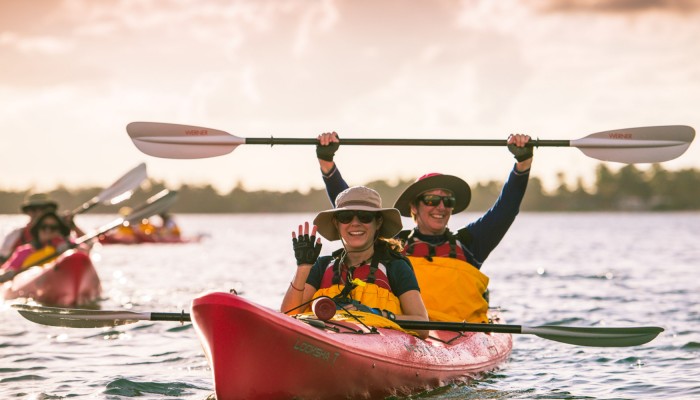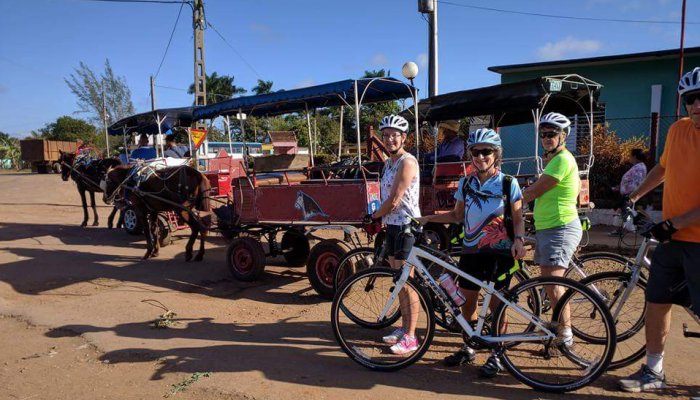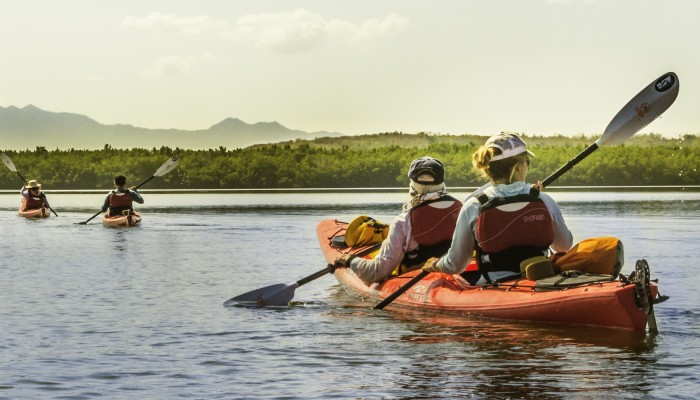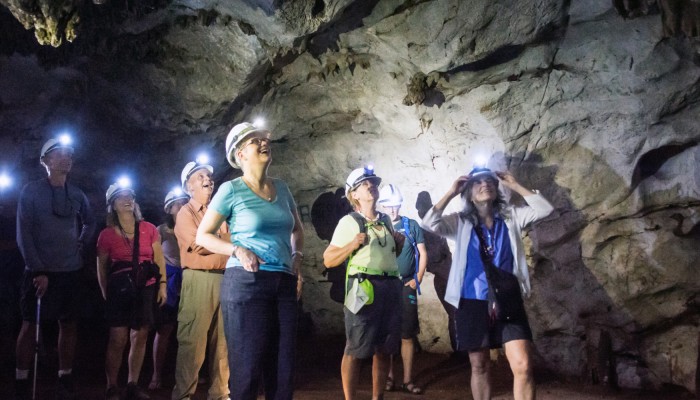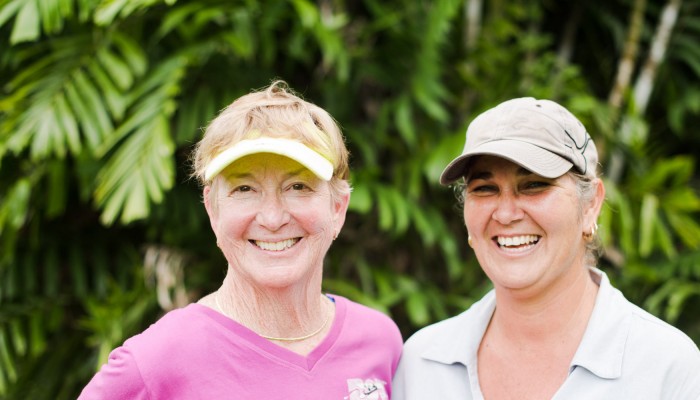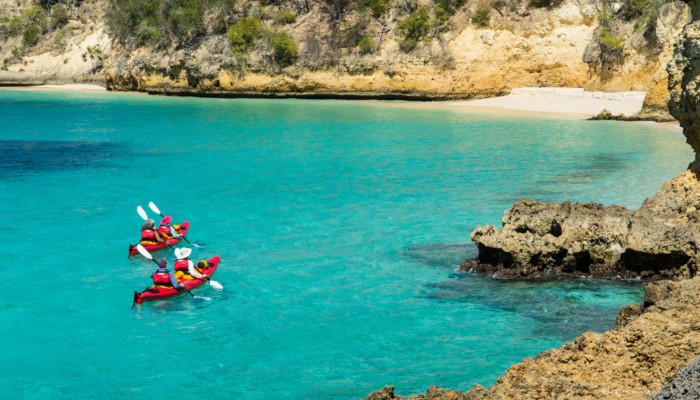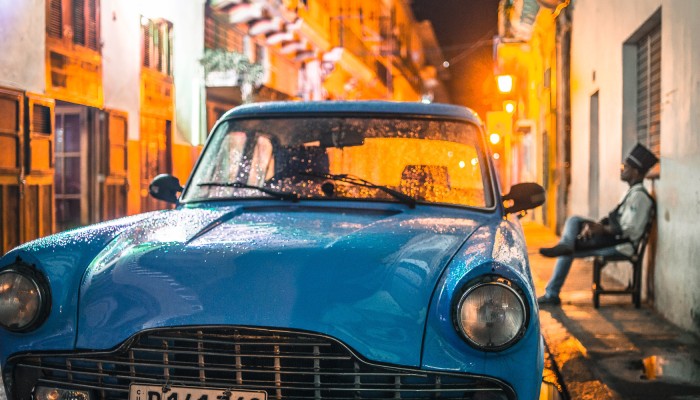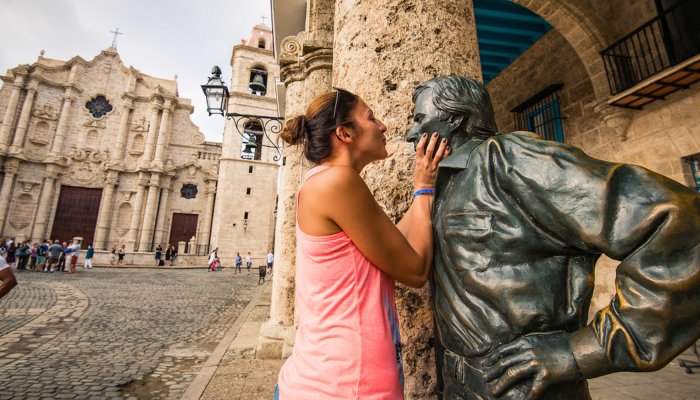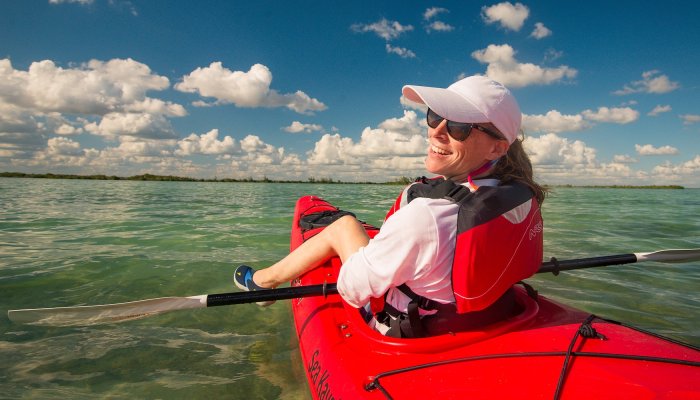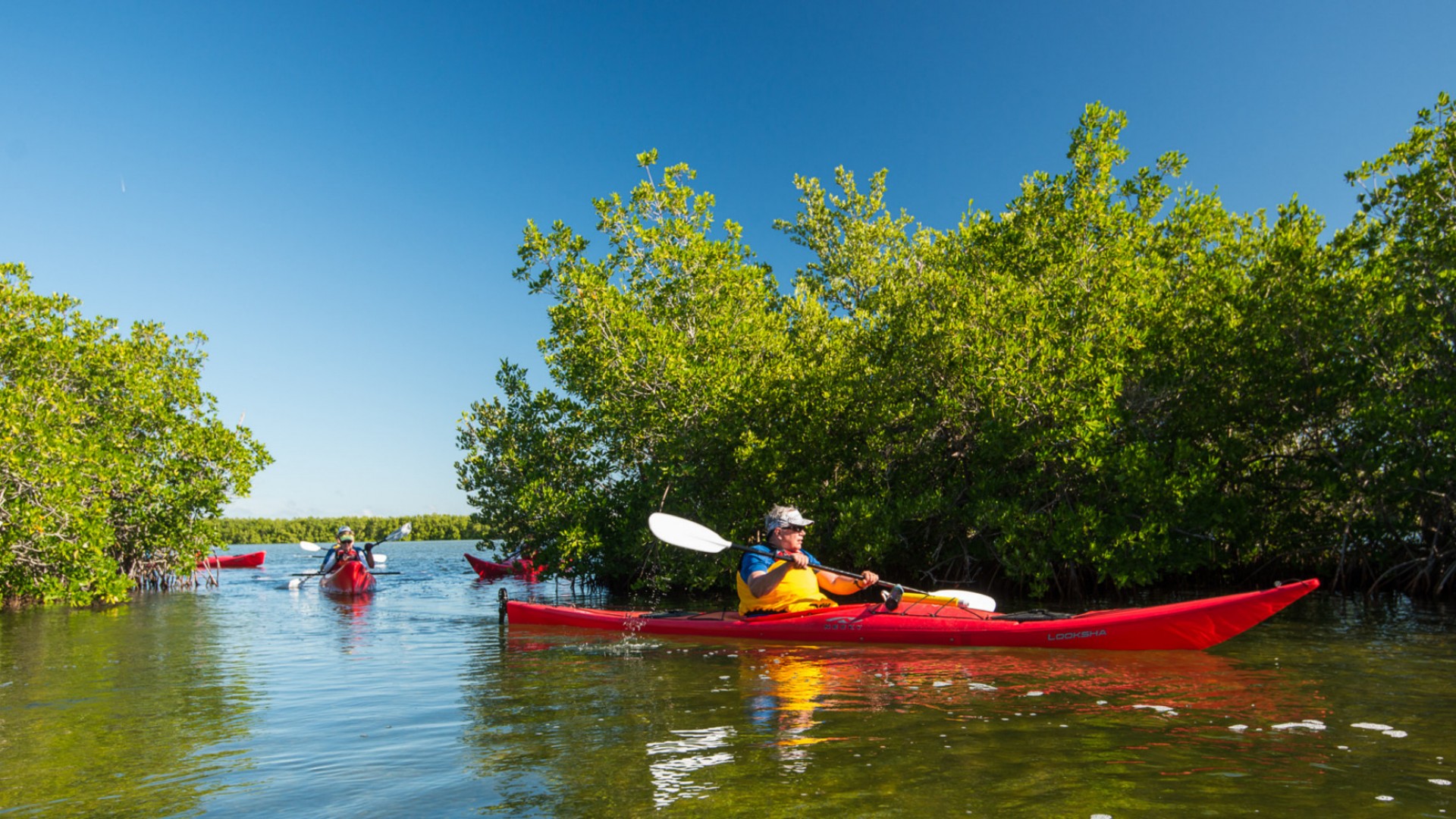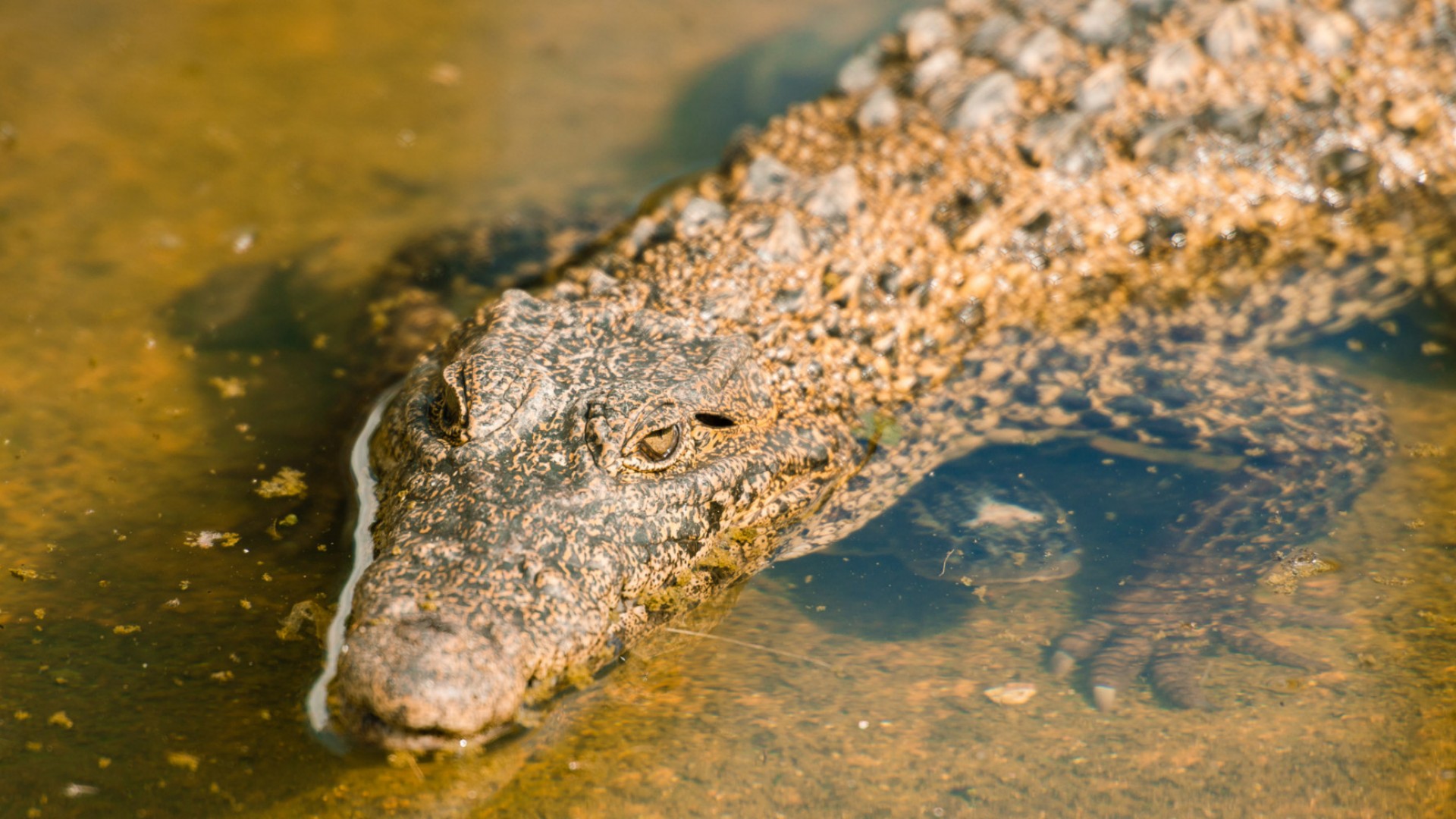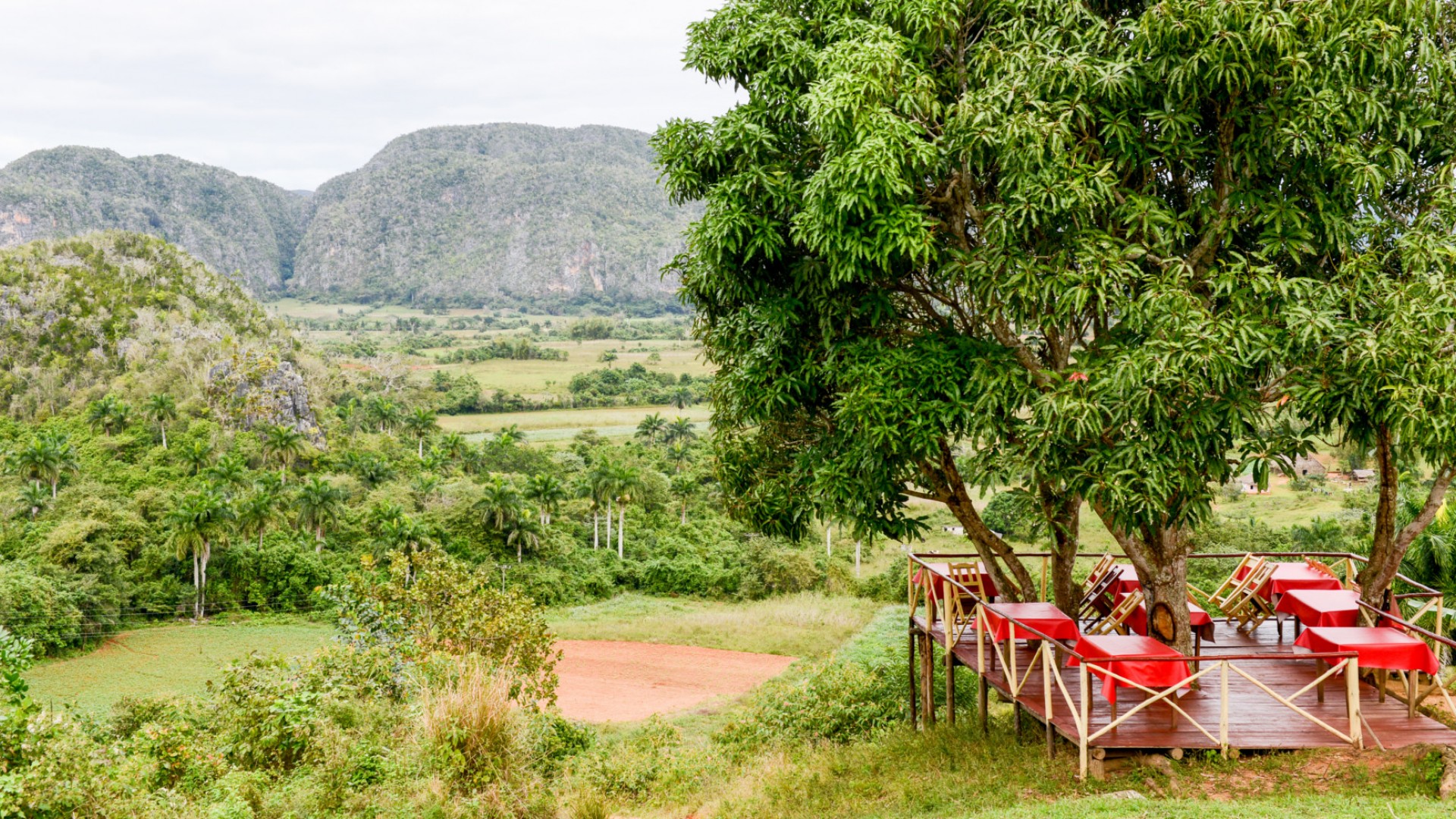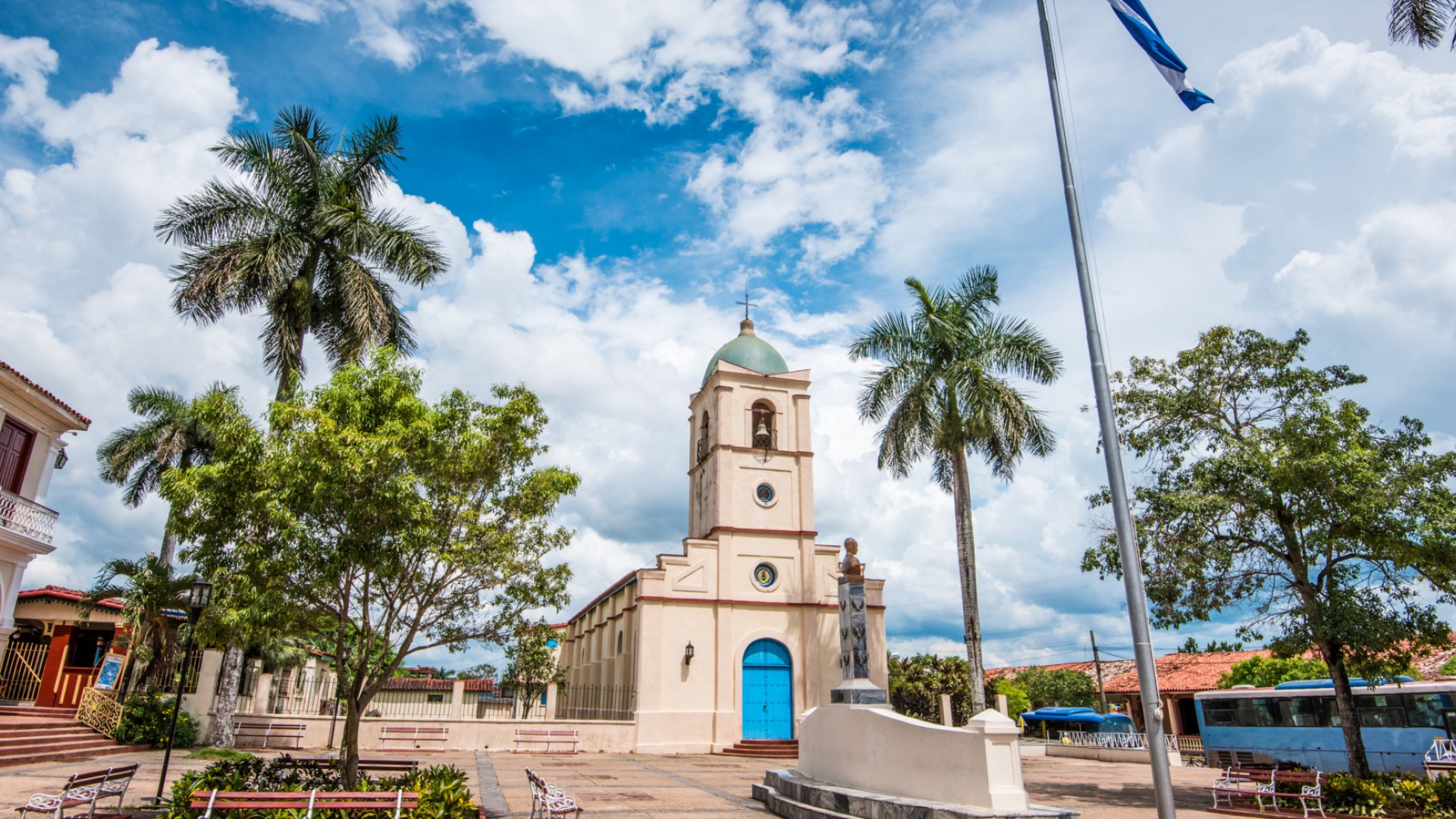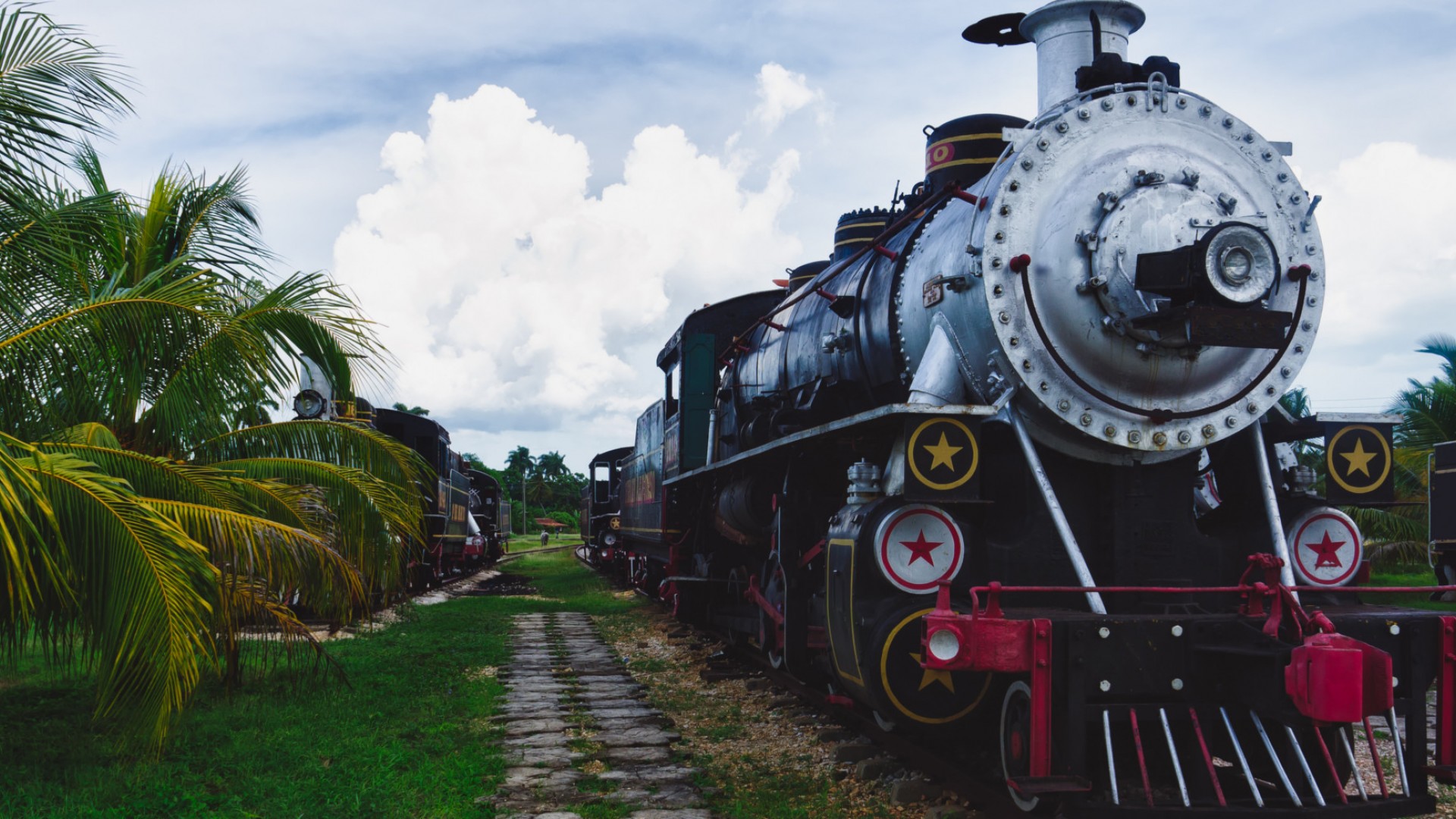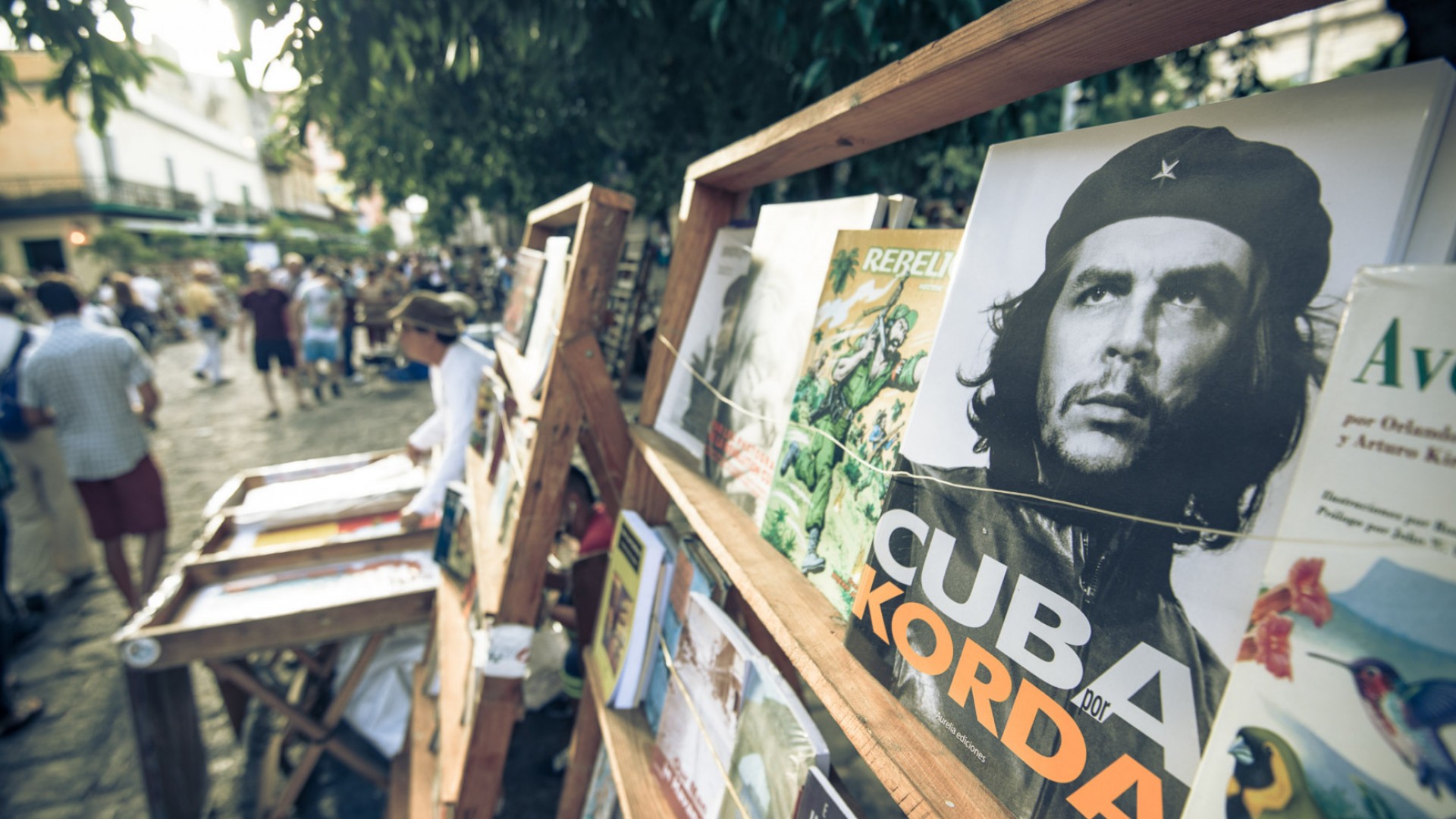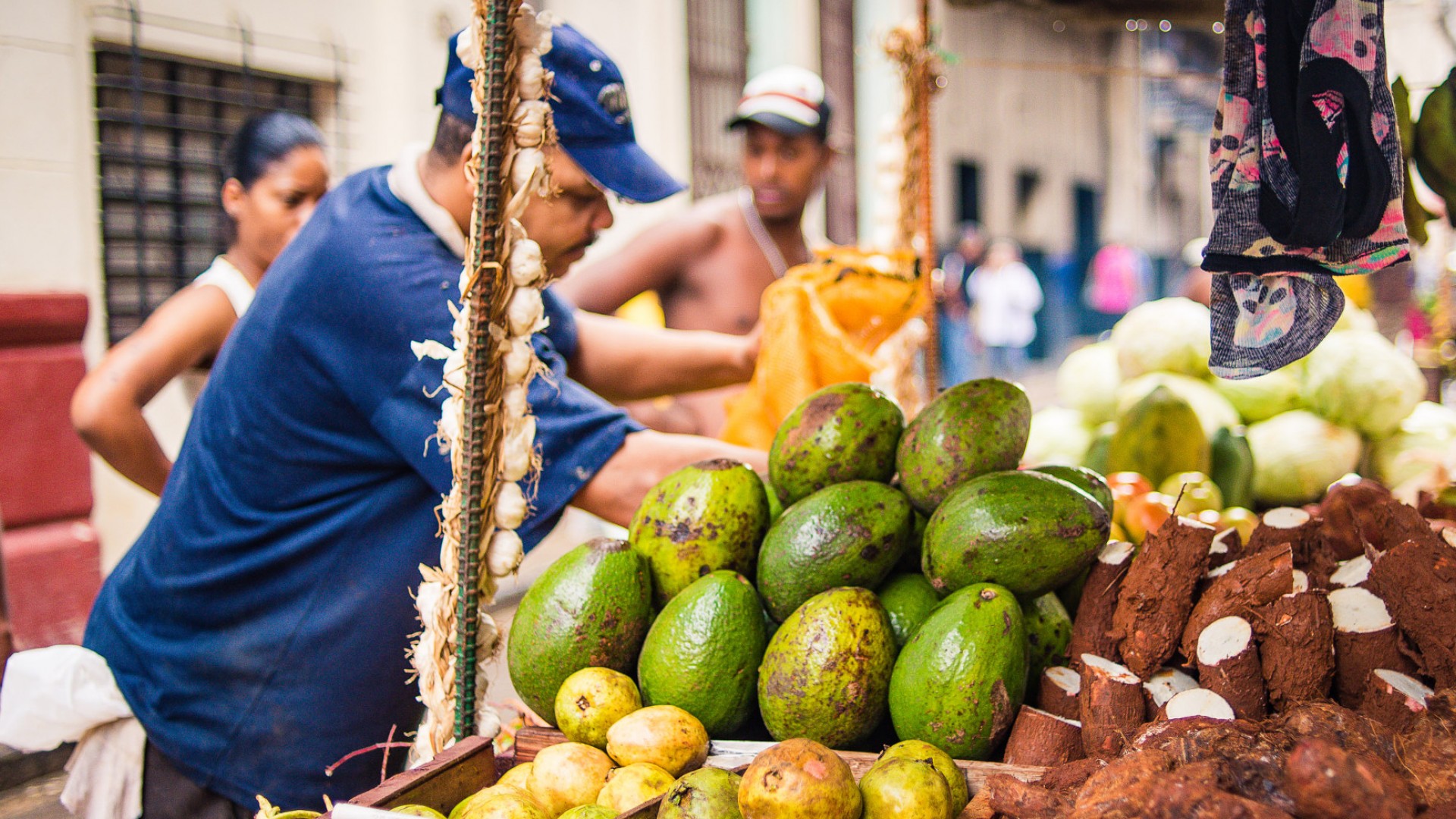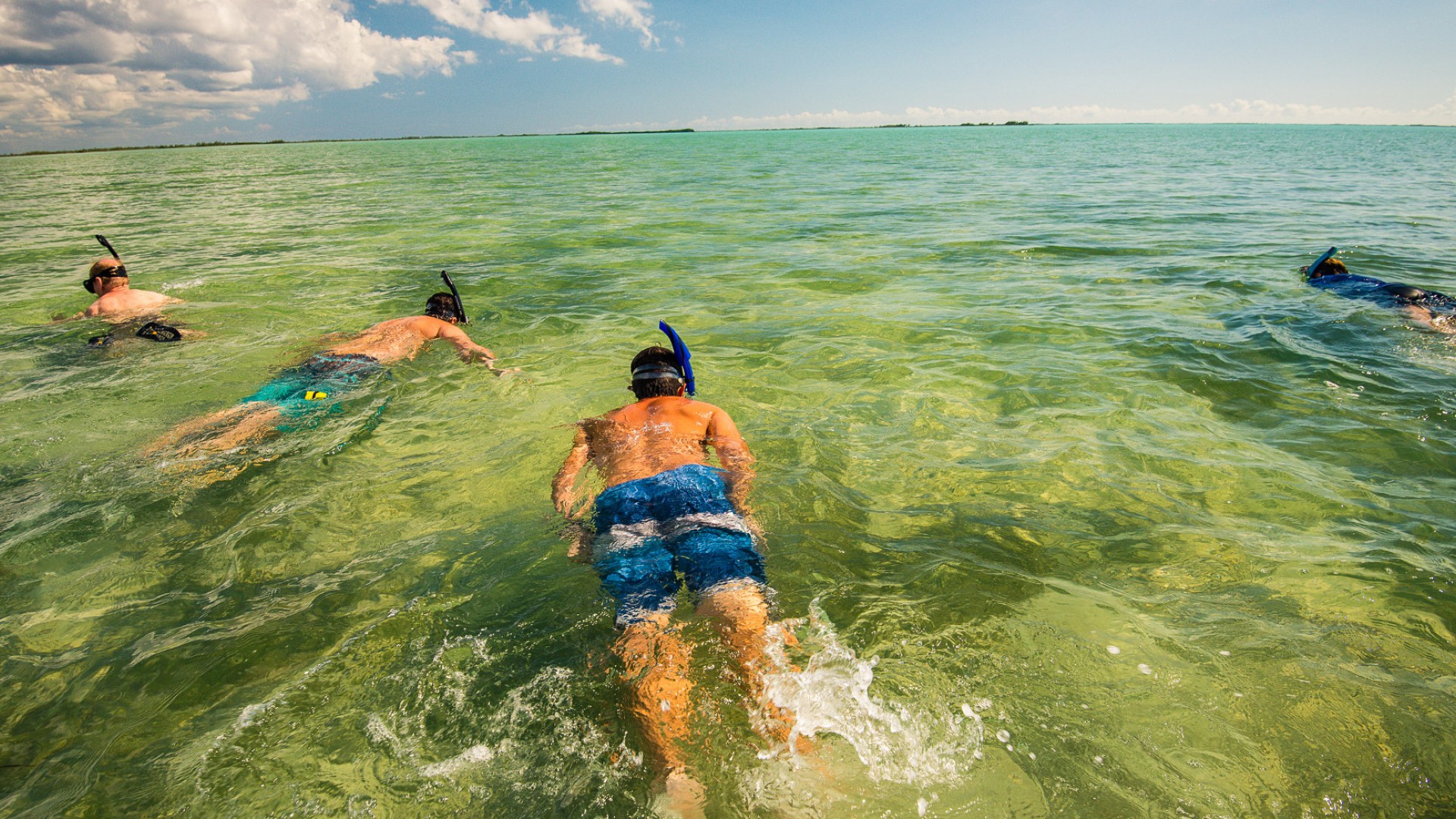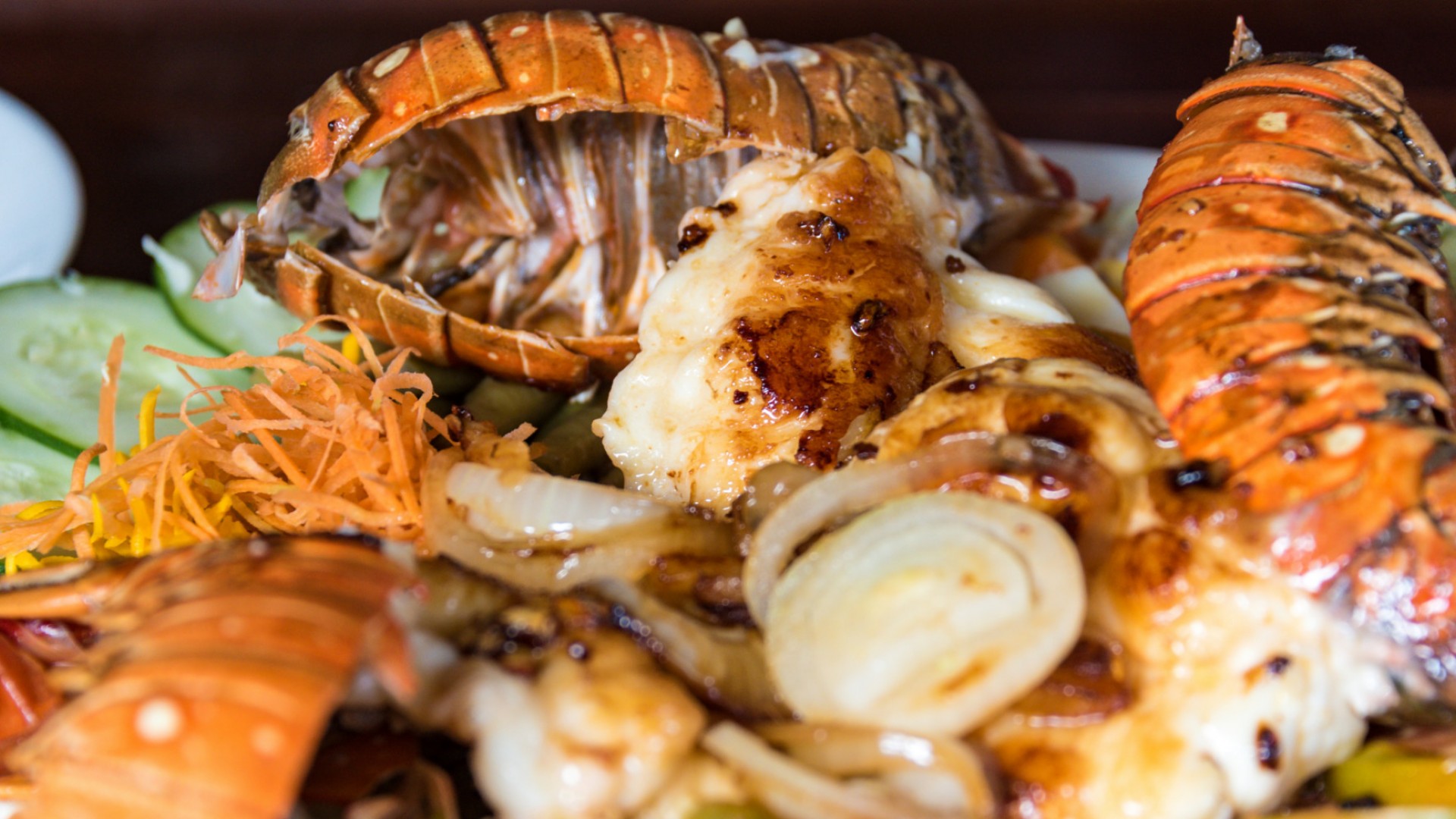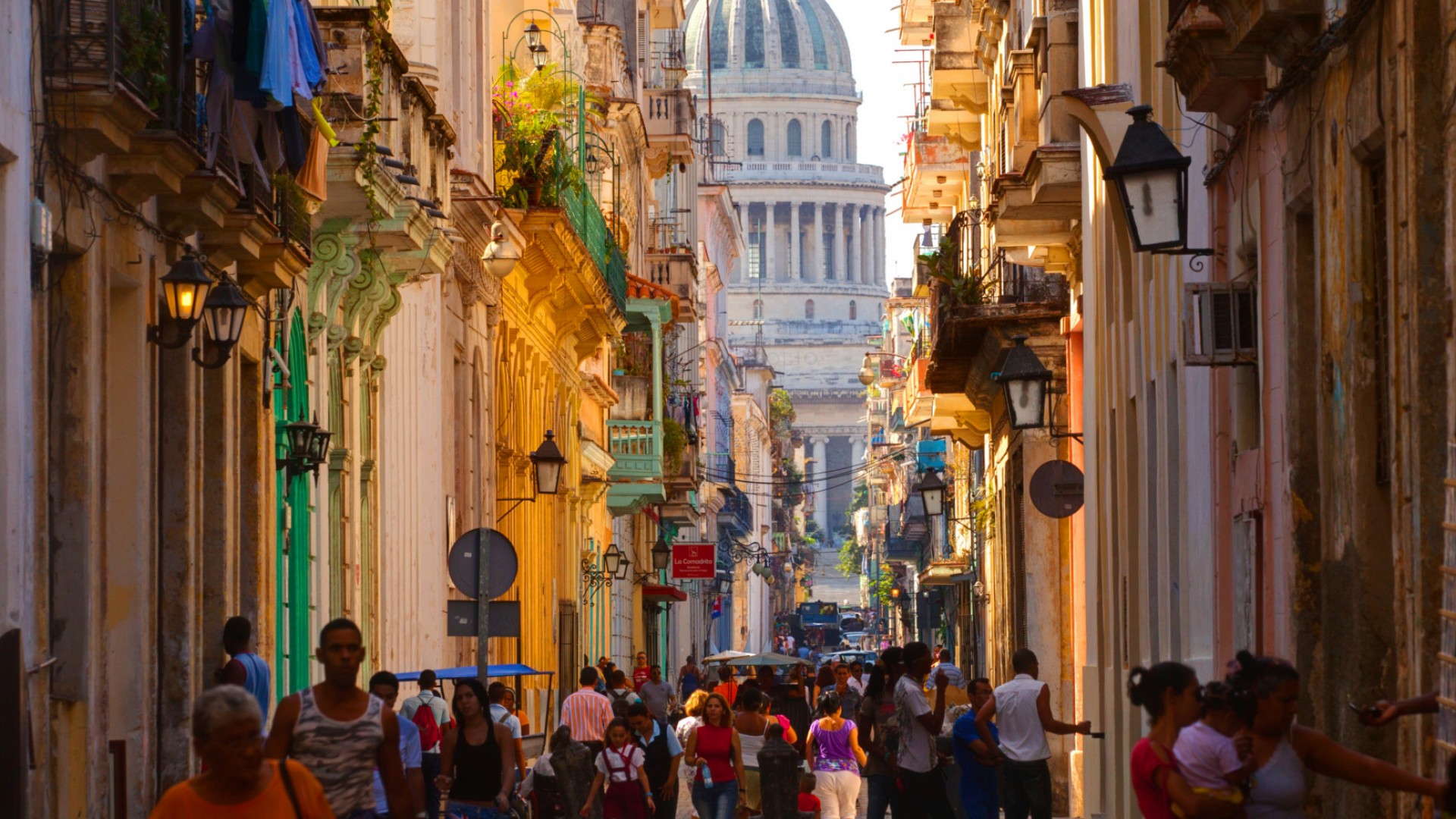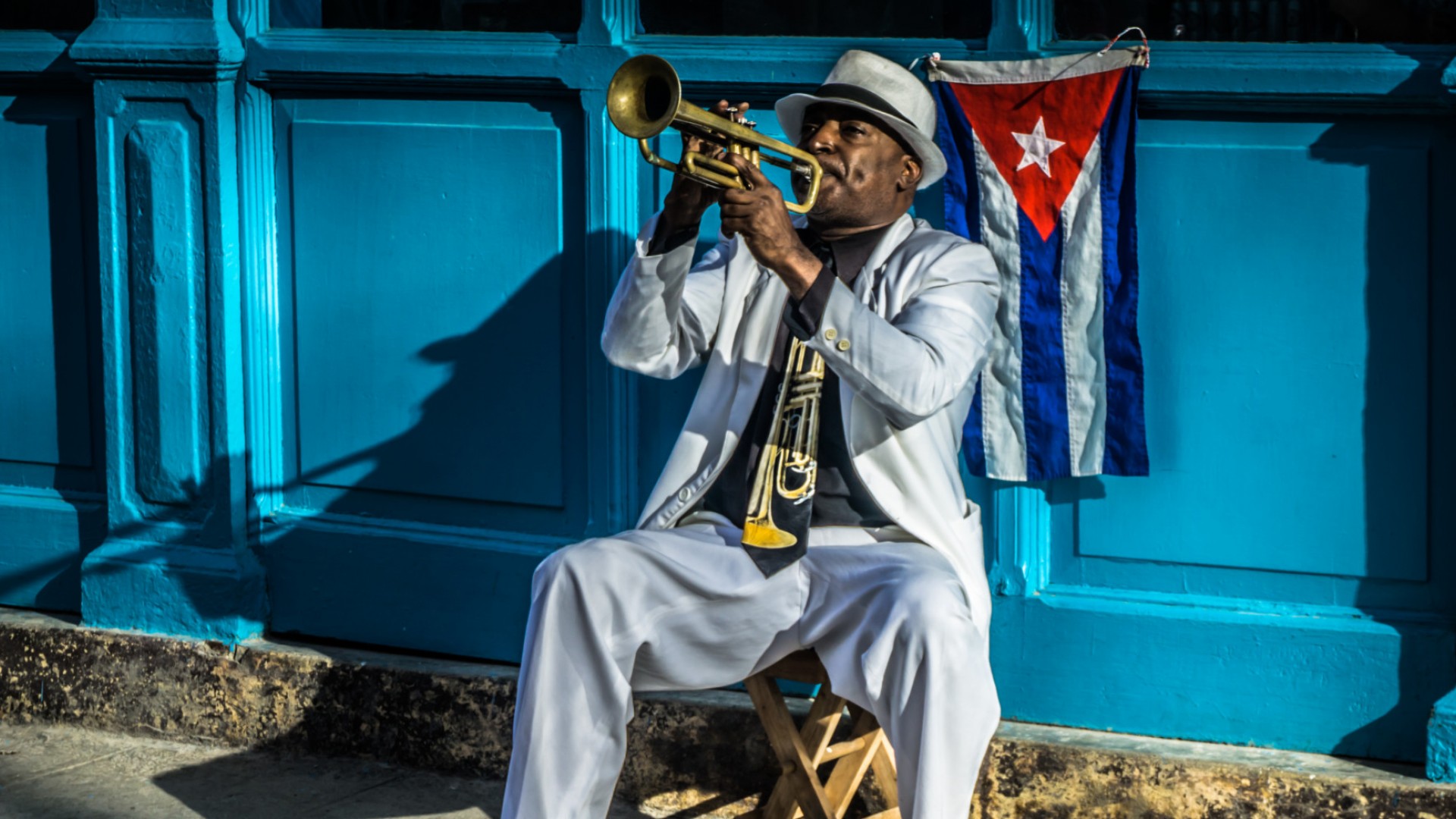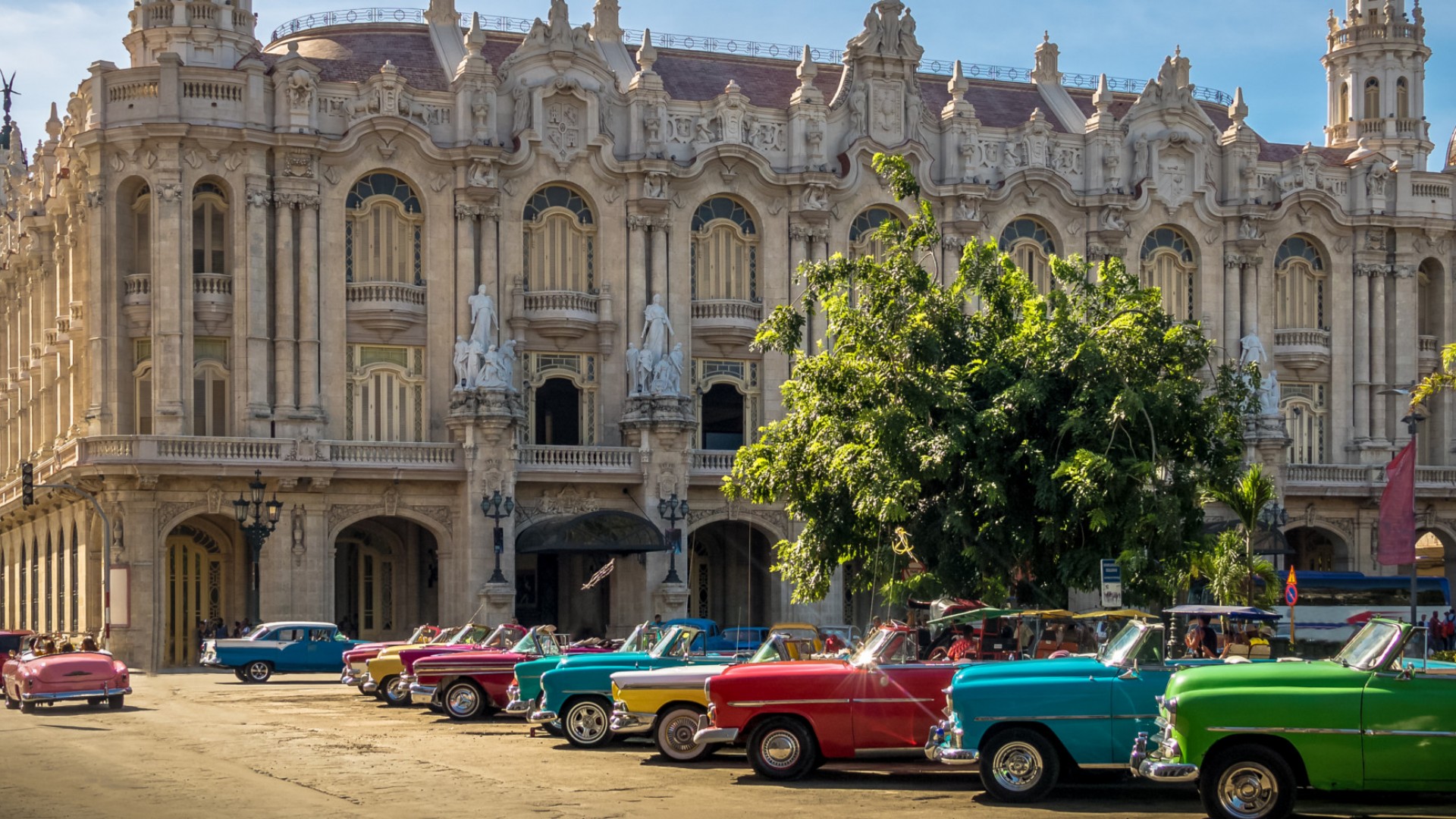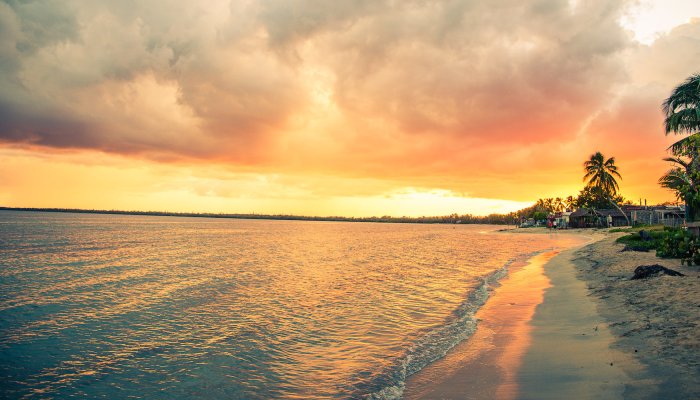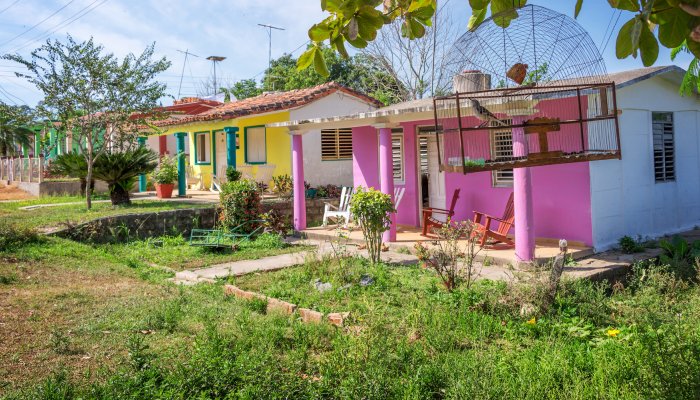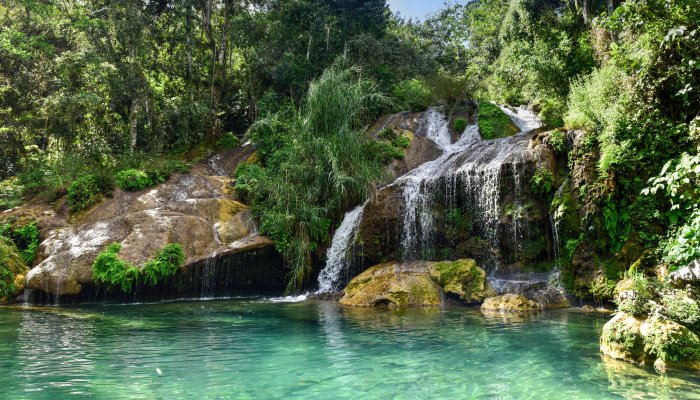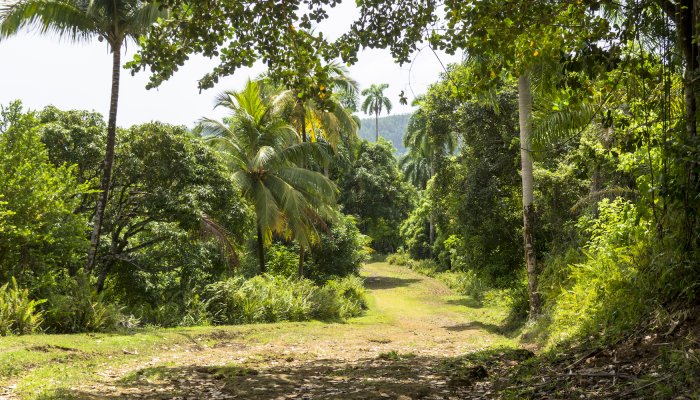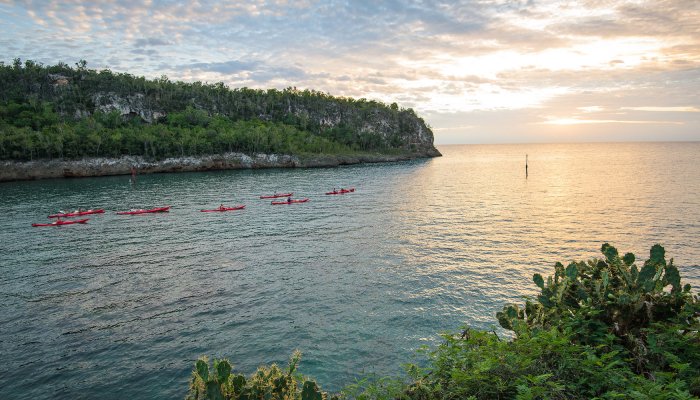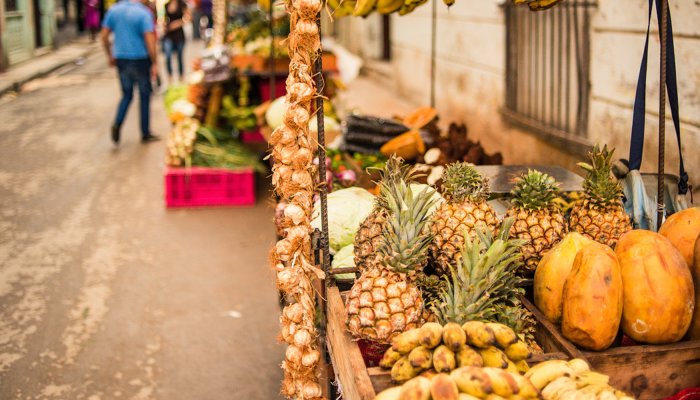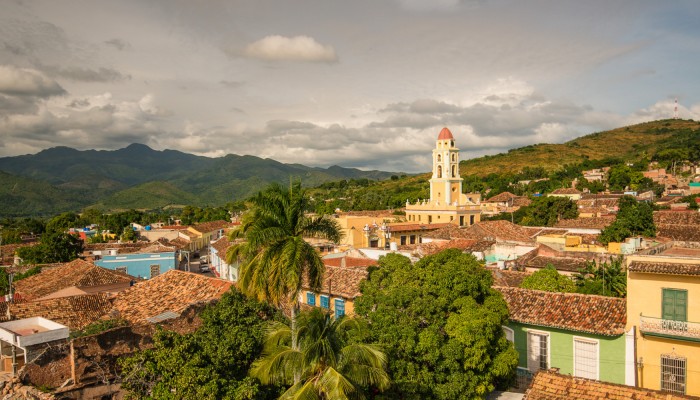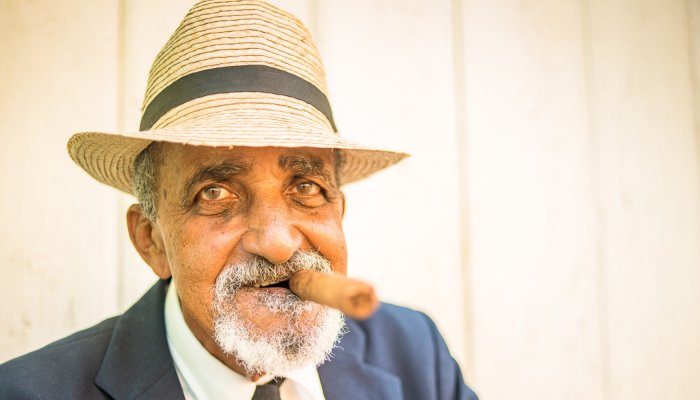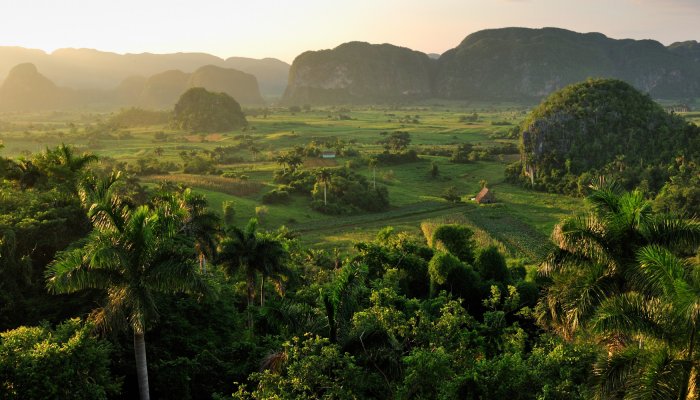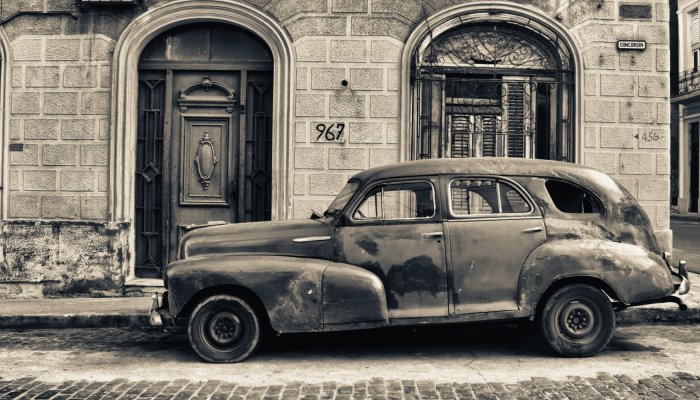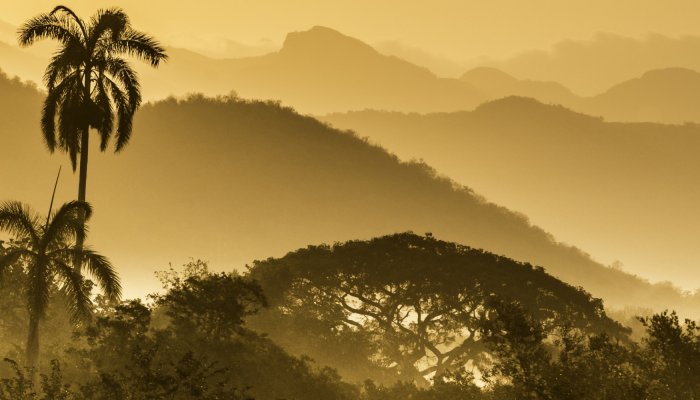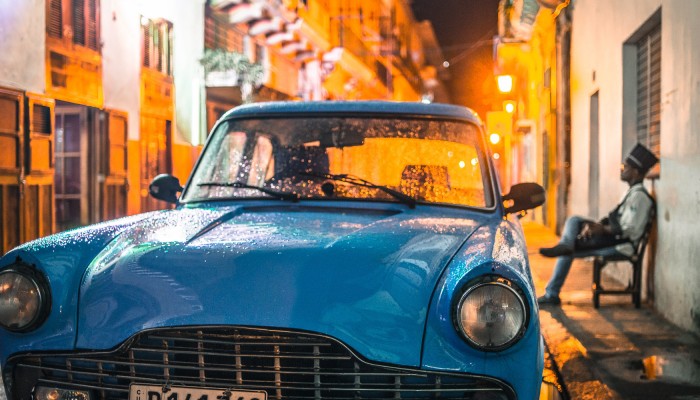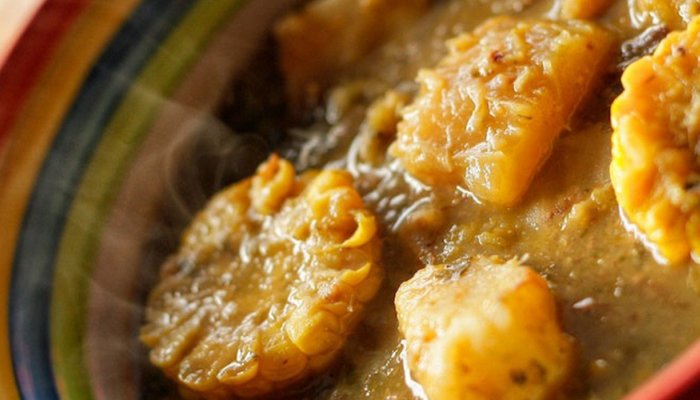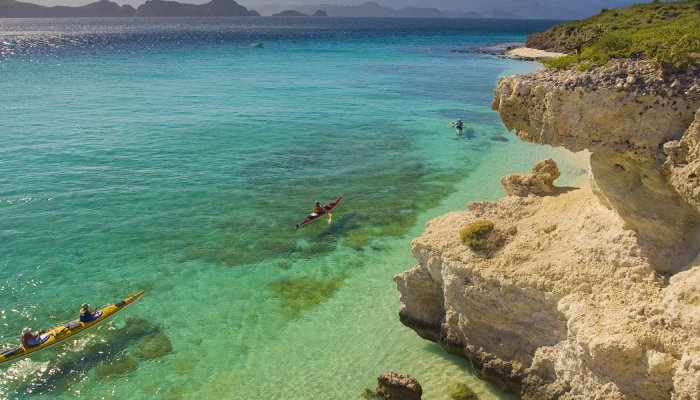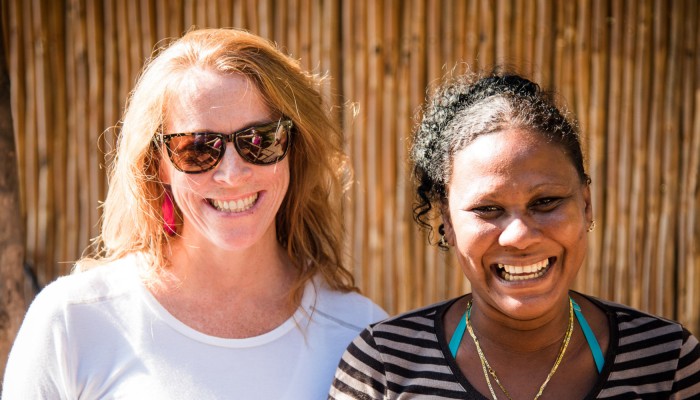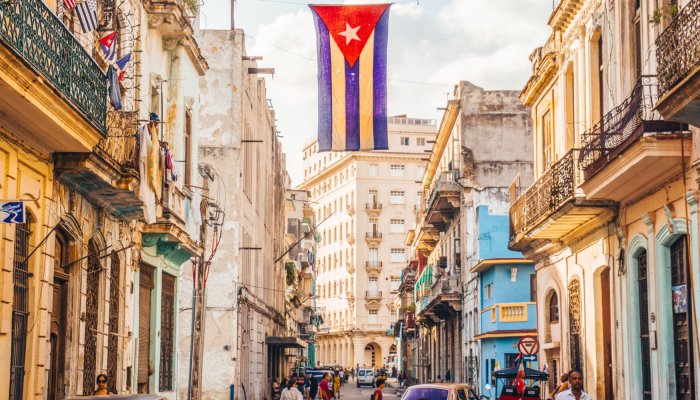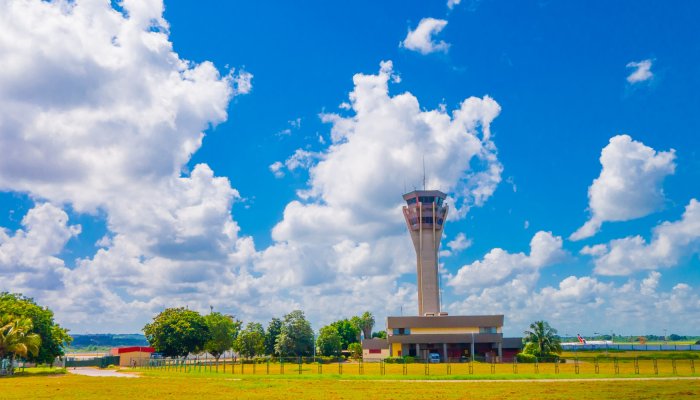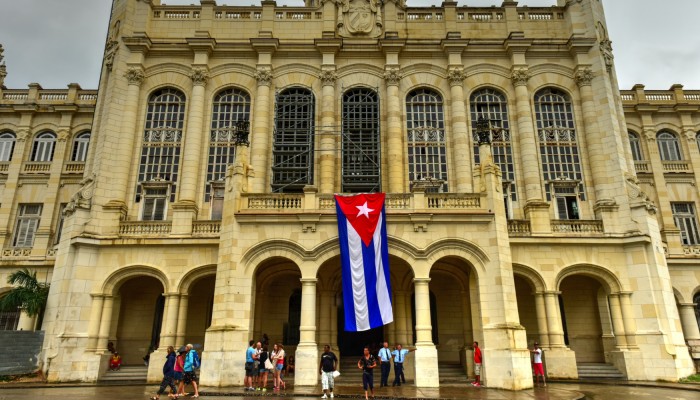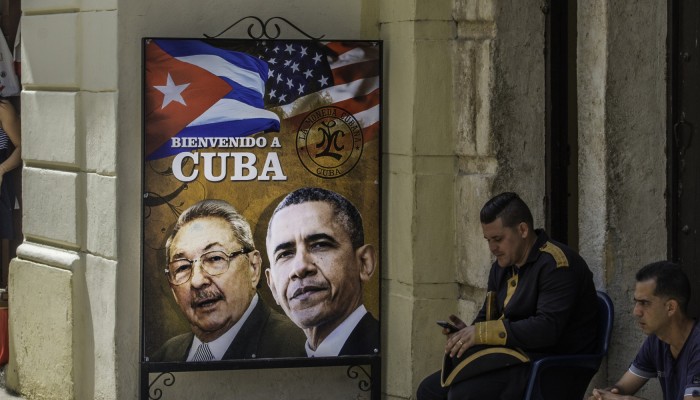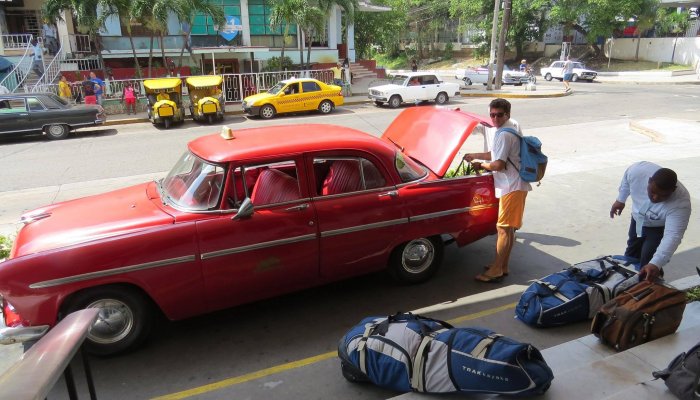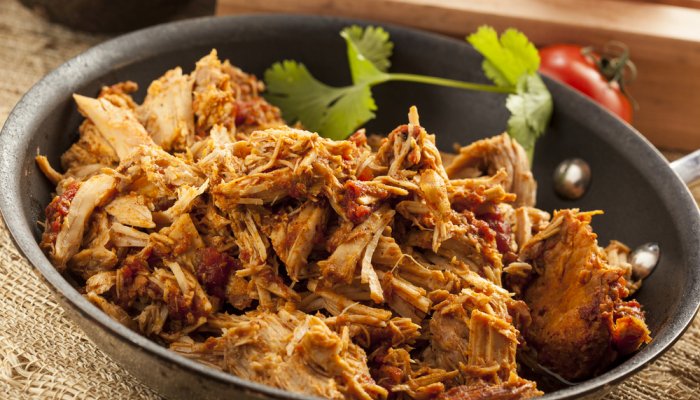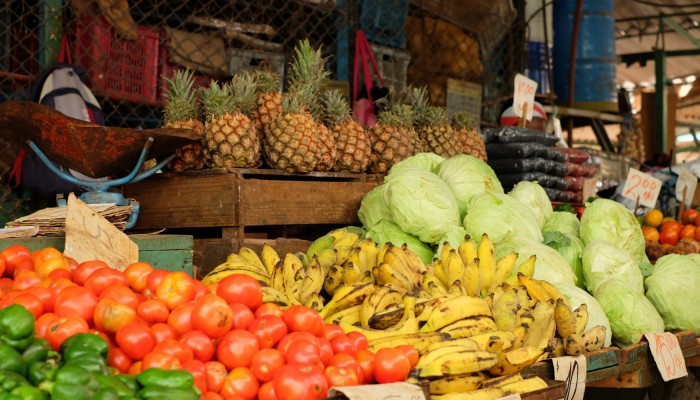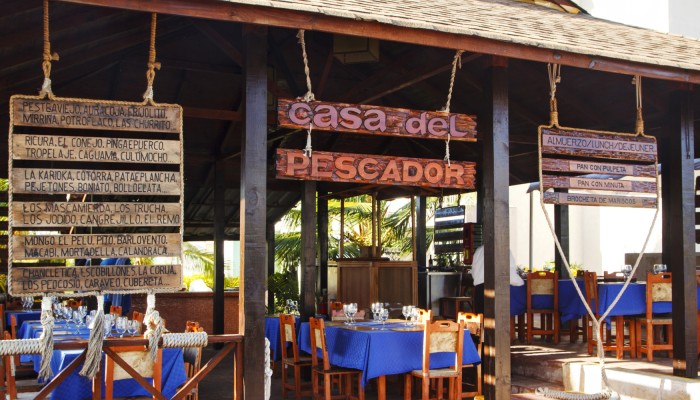Overview
Few countries are compelling as Cuba. From classic cars, rum, and cigars to untouched wetlands, reefs, and forests, this Caribbean gem is as complex as it is colorful. Cities are a vivacious blend of past and present, rich with Spanish colonial architecture, music, dance, and cultural celebration. From electric Havana to the streets of Santiago, there lies a history of rum, revolution, and so much more. Cienfuegos, Trinidad, Habana Vieja, and the Bay of Pigs are filled with reminders of Cuba’s intriguing colonial history.
Beyond the charged ambiance of Cuba’s cities is a rich realm of vibrant biodiversity. Coral reefs brim with tropical fish. Verdant wetlands, lined with swamps and mangroves, are home to flocks of pink flamingos. Fields of some of the world’s most coveted tobacco grows on old plantations tucked away from urban bustle.
Explore Cuba in a way no cruise line or city tour can offer. Only AU offers a truly immersive Cuban experience, where you step outside city confines and into Cuba’s hidden pockets to connect with locals in a unique people-to-people experience. Learn about Cuba’s people, culture, nature, and wildlife firsthand with Adventure Unbound!
Our Trips
Custom Tours in Cuba
With Adventure Unbound, discover Cuba’s magnificent culture and landscape on foot or by paddle led by expert local tour guides. We work closely with our partners and affiliates in Cuba to design custom and private tours just for you! We know all the corners of Cuba from east to west and everything in between, giving us the intimate knowledge needed to arrange special interest tours for birders, herpetologists, trekkers, fishermen, scuba divers, history buffs and more.
To get started, please fill out the form below, or you can learn more by reading some of our most frequently asked questions.
Image & Video Gallery
Country Guide
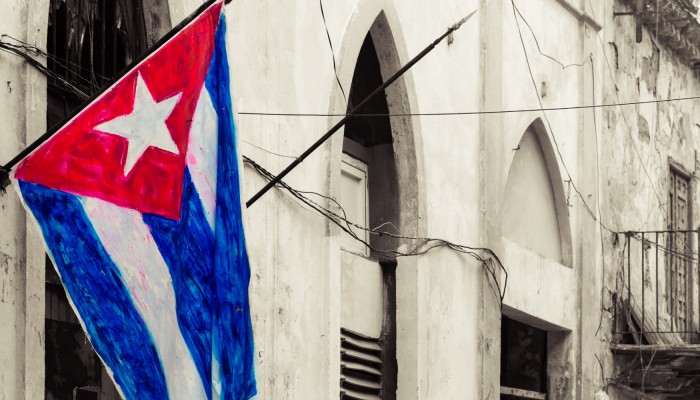
History
Before the arrival of the Spanish in 1492, the island we now know as Cuba was inhabited by the indigenous Taino and Guanahatabey people. The Taino are thought to have migrated from mainland South America, arriving on the island in the 3rd century AD. By the 15th century, they were the dominant culture in Cuba and spent their time farming, fishing, and hunter-gathering.
Christopher Columbus is credited with “discovering” Cuba on 27 October 1492 and claimed the island for the Kingdom of Spain, naming it Isla Juana after the Prince of Asturias. The first Spanish settlement was established at Baracoa by Diego Velazquez de Cuellar, followed shortly by San Cristobal de la Habana, which would later become the Cuban capital.
The Spanish set up an encomienda system (much like the European feudal system) and the indigenous people were forced to work under repressive conditions. Introduced infectious diseases had a devastating effect on the Taino and Guanahatabey people, with two-thirds of Cuba’s native people killed during a measles outbreak in 1529.
Those that survived were given their freedom by Dr. Gonzalo Perez de Angulo, who was appointed the governor of Cuba in September 1548. By the late 16th century, the majority of Cubans were a mix of Spanish, Taino and African heritages, with slaves imported to support the colony’s growth. Two centuries later and there were an estimated 50,000 slaves in Cuba, the majority of which worked the island’s sugarcane plantations.
In 1762, a British expedition set out from Portsmouth to capture Cuba, a result of Spain’s alliance with the French during the Seven Years’ War. Havana eventually surrendered and George Keppel, the 3rd Earl of Albemarle, took control of Cuba’s west and opened the island up to trade with North America and the British Caribbean colonies. While Cuba transformed rapidly during this period, there were fears of a decline in sugar prices during the British occupation and, within a year, they had signed the Treaty of Paris to end the Seven Years’ War. In exchange for Cuba, the Spanish gave Britain Florida.
The late-18th-century Haitian Revolution also had a significant impact on Cuba, with fear from sugar plantation owners that their slaves might revolt as well. At the same time, many plantation owners thought they could exploit the situation and transform Cuba into a flourishing slave society. It is estimated that between 1790 and 1820, around 325,000 Africans were imported to Cuba to work as slaves in an attempt to take over Haiti’s title as the sugar-producing “Pearl of the Antilles”. By the mid-19th century, many sugar plantation slaves were buying themselves out of slavery and they came to dominate many urban industries where white labor was at a shortage.
As many other Latin American countries were rebeling against the Spanish Empire and forming independent states, Cuba remained loyal until an independence rebellion led by sugar planter, Carlos Manuel de Cespedes, broke out in 1868. This led to the Ten Years’ War, which was fought by not only former slaves but also indentured Chinese servants and volunteers from the Dominican Republic. The conflict came to an end with the signing of the Pact of Zanjon in 1878, which saw Spain offering greater autonomy to the island. While slavery had been abolished three years earlier, it was only in 1886 that it came into effect.
Another independence movement was started by exiled dissident Jose Marti, who is credited with founding the Cuban Revolutionary Party in 1892. Three years later, he traveled to the Dominican Republic where he joined Major General Maximo Gomez before arriving in Cuba on 11 April 1895. Jose Marti was killed just a month later during the Battle of Dos Rios and has been immortalized as a national hero ever since.
As part of the Spanish attempts to suppress the rebel army, they forced Cuba’s rural settlers into reconcentrados, which have been described as a “prototype for 20th-century concentration camps”. It is believed that between 200,000 and 400,000 Cubans died as a result of starvation and disease in the camps, leading to protests across America and Europe.
When the U.S. battleship USS Maine arrived to protect American interests in 1898, it exploded and sank in Havana harbor. Many believed it was the work of the Spanish and the two countries quickly declared war on one another. This was relatively short-lived, however, with the signing of the Treaty of Paris a few months later, which saw the Spanish ceding Puerto Rico, the Philippines, and Guam to the United States and Cuba becoming its protectorate.
On 20 May 1902, Cuba officially became independent of the United States, although the Americans retained the right to supervise the country’s finances and foreign relations, which they did several times over the next few decades. Tourism on the island boomed under president Gerardo Machado, during which time numerous American-owned hotels and restaurants were established. However, the Wall Street Crash of 1929 resulted in a collapse in sugar prices and political unrest. Machado eventually fled into exile following increasing pressure from protesting students and sugar worker uprisings.
His successor, Carlos Manuel de Cespedes y Quesada, was overthrown by Fulgencio Batista, who dominated Cuban politics for the next 25 years. He was the only non-white Cuban to serve as president and carried out major social reforms, including the right to labor and health care.
After completing his term in office, Batista moved to Florida but later returned to Cuba to run for president again in 1952. With defeat almost certain, he led a military coup and received significant financial and logistical support from the United States. During his second term in office, many political liberties were revoked and Batista aligned with wealthy sugar plantation owners, resulting in a widening of the gap between the rich and poor.
It was in this climate that Fidel Castro’s revolutionary forces gained momentum and he, together with his supporters, arrived aboard the Granma yacht in 1956 to rebel against the Batista government. He was supported by a U.S. arms embargo and by late 1958, the rebels broke out of the Sierra Maestra and captured Santa Clara, causing Batista to flee to the Dominican Republic.
While the United States government was initially in support of the Cuban revolution, the relationship deteriorated with the legalization of the Communist Party and the execution of agents and soldiers associated with Batista. Between 1960 and 1964, a range of sanctions were imposed on the island, including a total ban on trade between Cuba and the United States. A group of Cuban refugees, armed and trained by the U.S. government, attempted (unsuccessfully) to overthrow the Castro government in what is known as the Bay of Pigs Invasion on 14 April 1961.
Over the following decades, Castro supported Algeria in the Sand War against Morocco and sent thousands of troops to fight Soviet-led wars in Angola and Ethiopia. Cuba also played an active role in the Middle East during the Cold War and was involved in the Syrian-Israeli War of Attrition. In the 1980s, Castro also supported Marxist insurgencies across Central America.
Following the Soviet collapse in December 1991, Castro’s rule was tested in what is known as the “Special Period”, with a significant economic downturn and shortages of both food and fuel. While the Organization of American States lifted its sanctions against Cuba in 1975, the U.S. maintained its own sanctions. At the same time, the Cuban government refused to accept American donations of financial aid, food and medicines until 1993.
In more recent years, Cuba has found support from Venezuela, Bolivia, and the People’s Republic of China. Fidel Castro handed over control to his brother, Raul Castro, in 2008 and the following year, the OAS ended the 47-year ban on Cuban’s membership. However, Fidel Castro remained adamant that he was not interested in joining. Following his death in 2016, Fidel Castro’s funeral procession traveled 900 kilometers from Havana to Santiago along the route of his 1959 “Freedom Caravan”.
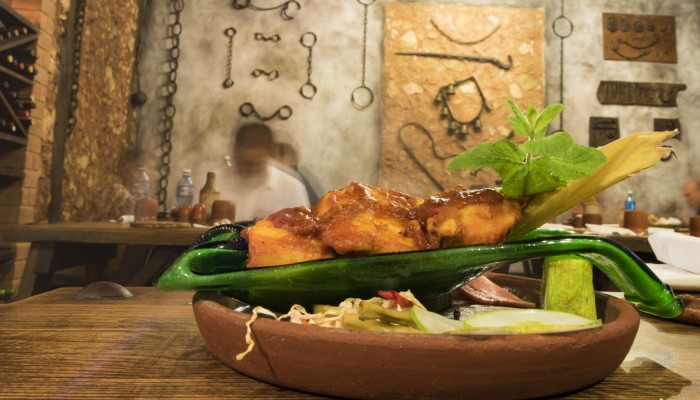
Cuisine in Cuba
Cuban cuisine blends influences from Spain, Africa, and other Caribbean islands, as well as spices and techniques used in Indigenous Taino cooking and culinary traditions brought by French colonists from nearby Haiti. Its tropical climate means that fruits and root vegetables are a staple in most dishes while seafood features prominently due to the country’s island setting.
Most Cuban meals feature rice and beans (either cooked together or apart), with arroz y frijoles negro (rice with black beans) accompanying most dishes. Another take is arroz Moros y Cristianos in which the rice and beans are mixed together, much like the Moors and Christians! If red beans are used in place of black beans, it is known as congri.
Ropa vieja comprises boiled and shredded beef that is stewed with bell peppers, onions, and cumin, although sometimes chicken or pork is substituted. Pork is more commonly used in lechon asado, a special roast dish that is prepared for national holidays. Other traditional meat dishes include picadillo a la Habanera (ground beef with tomatoes, potatoes, and olives), masas de cerdo frita (fried pork that has been marinated in lime), and bistec de cerdo ancebollado (pork steak with onions).
Vegetarians can look out for yuca con mojo (boiled or fried cassava with a delicious sauce), platano frito (fried bananas), and banana fufu. Along the coast, you’ll find enchilado de camarones (a spicy shrimp dish) and Cuban-style paella.
You can’t visit the island without trying a Cuban sandwich, which arrived with the movement of cigar workers between Florida and Cuba in the 19th century. It consists of roast pork, ham, cheese, and dill pickles with a generous spread of yellow mustard. After being assembled, the sandwich is then pressed in a panini maker known as a plancha.
When it comes to sweets, look for arroz con leche (the Cuban take on rice pudding) and flan de leche, a milk-based dessert that is sometimes flavored with coconut or pineapple. Another local favorite is casquitos de guayaba, which consists of guava (minus the seeds) that’s cooked and served with a sugary syrup.
Cuban rum serves as the basis for many of the island’s most famous cocktails, including mojitos (a favorite of Ernest Hemingway), daiquiris, and Cuba libres. Non-alcoholic favorites include batido de trigo milkshakes and pre-sweetened espresso, an essential mid-afternoon “pick me up”.
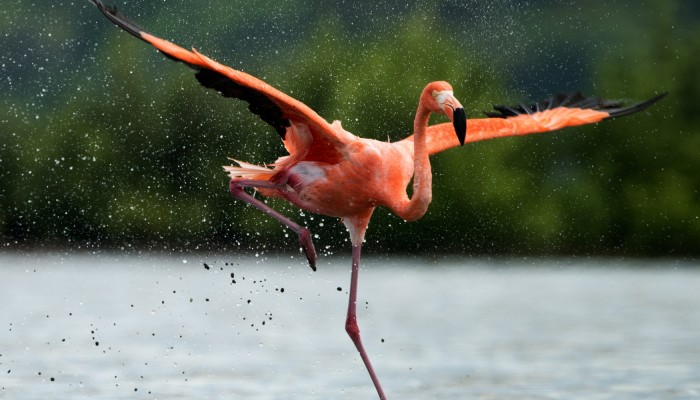
Wildlife in Cuba
Cuba is teeming with wildlife and is an animal lover’s paradise, with few of its fauna species harmful to humans. Nearly 80% of the island’s animals are endemic and they inhabit a diverse array of ecosystems that range from moist forests to cactus scrub and pine groves.
Cuba’s largest endemic land mammal is the hutia, a shy animal that lives in leafy treetops, while Cuban solenodons were considered extinct until one was captured in 2003. Among the island’s numerous bat species is the butterfly bat, which has a wingspan of only five inches and weighs less than an ounce.
When it comes to reptiles, you’ll find endangered Cuban crocodiles in the swamplands of Zapata, as well as Cuban rock iguanas that can sometimes be seen jumping from trees into the water to swim. The Cuban boa is the largest snake to inhabit the West Indies, growing to more than 15 feet in length.
More than 350 bird species call the island “home”, including the remarkable bee hummingbird. At only 5.5 centimeters in length, it is the smallest bird in the world and is considered a symbol of love by Cubans. Also not to miss is the national bird, the Cuban trogon, which shares its colors with the Cuban flag.
In the waters surrounding the island, there are more than 900 different species of fish, as well as sea turtles, porpoises, and dolphins. Encounters with West Indian manatees are a highlight of boat cruises in Cuba, with these once-hunted, whiskered creatures now listed as a protected species.
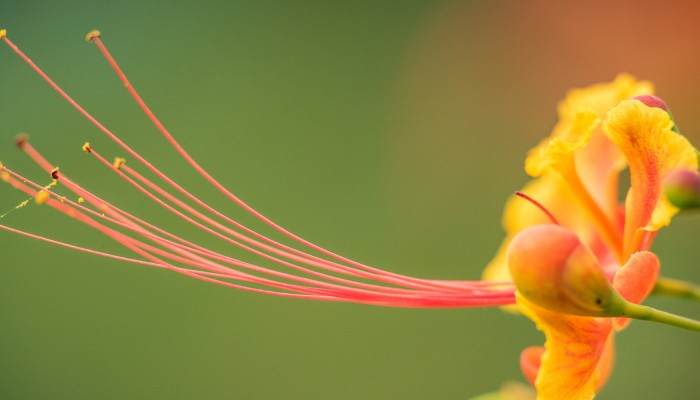
Flora of Cuba
Cuba boasts one of the Caribbean’s highest levels of floral biodiversity, with more than 6,700 plant species found on the island. Around half of these are endemic and roughly 950 are considered endangered. The island’s vegetation ranges from coastal mangroves and wetlands to dry and scrubby pine forests, as well as featuring tracts of lowland rainforest and montane cloud forest.
When the Spanish first arrived in Cuba, it is thought that around 90% of the island was forested. But this was rapidly diminished as sugar and coffee plantations were established and land was cleared for cattle ranching. Since the Cuban revolution, conservation and reforestation efforts have increased, with success stories including the UNESCO-listed Las Terrazas Biosphere Reserve and the Cienaga de Zapata Biosphere Reserve.
Cuba’s national flower is the mariposa, a native jasmine that was considered a symbol of rebellion during the wars for independence. The country is also noted for its hundreds of species of orchids, which bloom from the coast to the high reaches of the Sierra Maestra.
Around 100 different species of palm trees grow on the island, including the iconic royal palm that can reach heights of up to 60 feet. It is the national tree and is often referred to as “the queen of the fields” due to its majestic appearance.
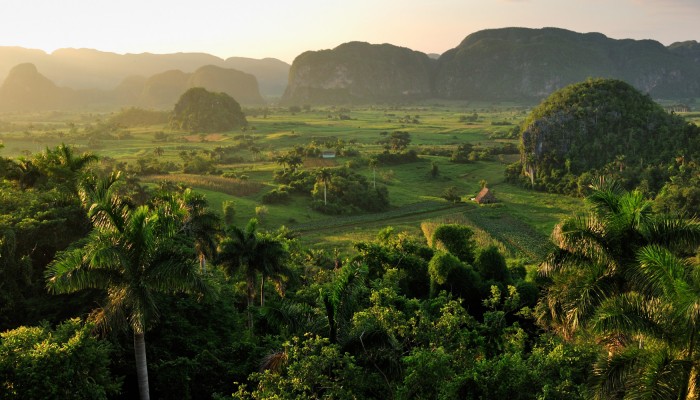
Geography of Cuba
Cuba lies at the confluence of the Gulf of Mexico and the Atlantic Ocean, with the 90-mile-wide Straits of Florida separating the island from the United States. To the north is The Bahamas while Mexico lies to the west across the Yucatan Channel. Around 50 miles to the east of Cuba is Haiti, with Jamaica and the Cayman Islands situated to the south.
Cuba is an archipelago, with its main island surrounded by four smaller island groups - the Colorades, Sabana-Camagüey, Jardines de la Reina, and Canarreos archipelagos. Its main island is the largest in the Caribbean, encompassing rolling plains and the rugged peaks of the Sierra Maestra mountains.
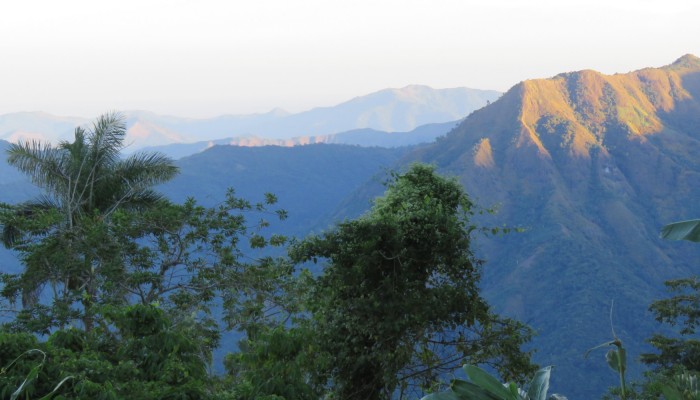
Geology of Cuba
Cuba’s geology differs from its Caribbean neighbors due to the 900-million-year-old metamorphic rocks found in the province of Santa Clara. The western part of the island came about due to an island arc collision in the Cretaceous period while Eastern Cuba is of Cenozoic volcanic origin.
Cuba is located in an area that’s known for its active fault systems and experiences around 2,000 seismic events each year, most of which go unnoticed. Several major earthquakes have struck over the last few centuries, however, including one in 2020 that measured 7.7 on the Richter Scale.

Conservation in Cuba
Following the arrival of the Spanish in the 15th century, Cuba experienced significant environmental changes due to forest clearing and the establishment of sugar cane plantations. Non-native species were introduced to the island, including the Asian mongoose, goats, and donkeys, all of which threatened Cuba’s biodiversity. Their impact on native wildlife has been significant, with Cuba having the highest percentage of endangered amphibians in the world. Several bird species also became extinct in the colony’s early years due to hunting and trade.
In recent years, Cuba has made significant efforts to improve its conservation efforts and around 22% of the island’s land and water areas are now protected. Of the country’s 211 protected areas, 12 are designated as national parks. These include the striking limestone mountains of Viñales National Park, Zapata National Park (including the Bay of Pigs), and the bird-filled Guanahacabibes National Park.
In 1992, Cuba signed the Rio Convention on Biological Diversity, and (according to a 2012 study) it was the only country in the world to meet the sustainable development conditions advised by the World Wildlife Fund.
Travel Essentials
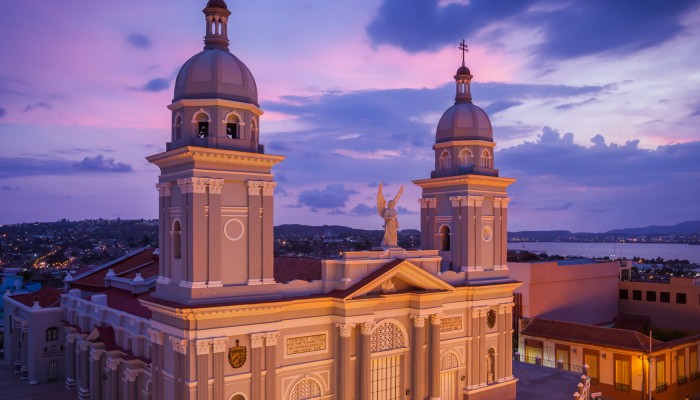
Money in Cuba
Cuban Currency
Cuba uses the Cuban peso (CUP) as its official currency. Banknotes are available in $500, $200, $100, $50, $20, $10, $5, $3 and $1 while coins come in $5, $3, $1 and 20¢.
Prior to January 2021, there was a dual currency system in Cuba but this has been phased out.
ATMs and Credit Cards
ATMs can be used for withdrawing cash in Cuba but they are not as readily available as in other parts of the world. That being said, most of the popular tourist cities, including Havana and Santiago de Cuba, have numerous ATMs, although it’s not uncommon for them to be out of service or out of cash. Always check with your bank before you leave home about any withdrawal limits and the fees they charge for international transactions.
It’s not possible to buy CUP before arriving in Cuba, so it’s best to bring Euros, Canadian Dollars or Pounds Sterling to trade on arrival. Banks generally open on weekdays from 9:00 to 15:00 while currency exchange offices known as CaDeCa (Casa de Cambio) open from 9:00 to 18:00 on weekdays and Saturdays and 9:00 to 12:00 on Sundays. To change money at a CaDeCa, you will need your passport.
Credit cards are not widely accepted in Cuba and it’s best to carry cash to make payments at restaurants and stores. Some larger hotels and tourist facilities will accept credit and debit cards, with non-US Visa cards the most welcomed.
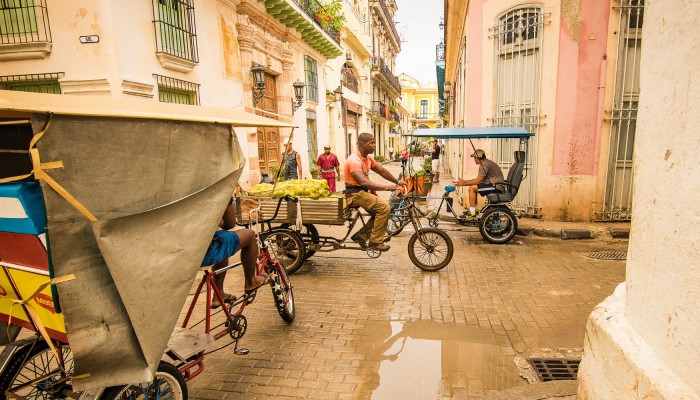
Health & Safety in Cuba
Inoculations
There are no compulsory immunizations for travel to Cuba, unless you are arriving from a country with endemic yellow fever or cholera. That being said, the Center for Disease Control and Prevention (CDC) advises that travelers are up-to-date on their routine vaccinations before visiting, including tetanus, hepatitis A, cholera, and typhoid. Everyone over 12 years of age should also be fully vaccinated against Covid-19 before travel.
Safety
Compared to many of its Latin American neighbors, Cuba is a relatively safe country to visit, particularly when it comes to gun crime. However, petty crime can be a problem in tourist cities, especially against foreigners. Never carry valuables in easy-to-reach pockets and avoid flashing expensive jewelry or cameras. You should always carry a photocopy of your passport as police may ask to inspect it.
If you are renting a vehicle, never leave valuables visible on the seats or in the trunk and always park your car in a secure/guarded place if possible.
Travel Insurance
Travel insurance covering medical expenses is compulsory to visit Cuba and immigration authorities may check this on arrival. If you don’t have travel insurance, you will be required to sign up to the tourist-assistance agency, Asistur, before being granted entry.
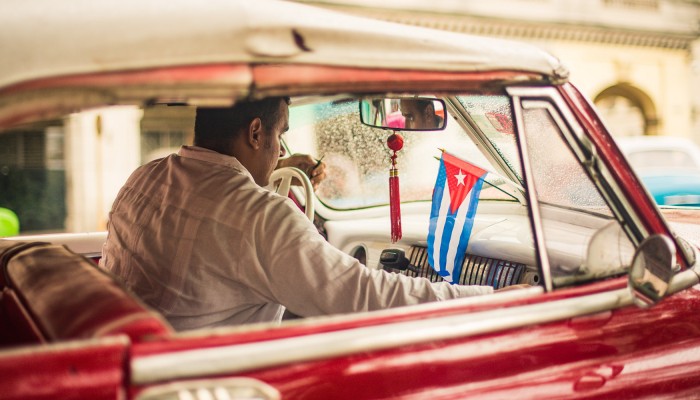
Cuba Entry Requirements
Visas are required to enter Cuba for citizens of most European countries, the United States, Australia, and New Zealand. You can apply for a visa (also known as a tourist card) through your closest Cuban consulate and this will allow you to stay in the country for up to 30 days. You must have a valid passport for the duration of your stay, proof of a return flight, and confirmation of an accommodation booking in Cuba.
Citizens of the United States also need to declare the reason for their trip according to 12 categories of authorized travel to Cuba. For most tourists, “Support for the Cuban people” is the category of choice as it encompasses activities like visiting museums, eating at locally-run establishments, touring tobacco farms, and taking salsa lessons. You may be asked to declare your chosen category when booking a flight or accommodation, as well as on return to the United States. Other categories include “Family visits”, “Journalism”, and “Professional research”.
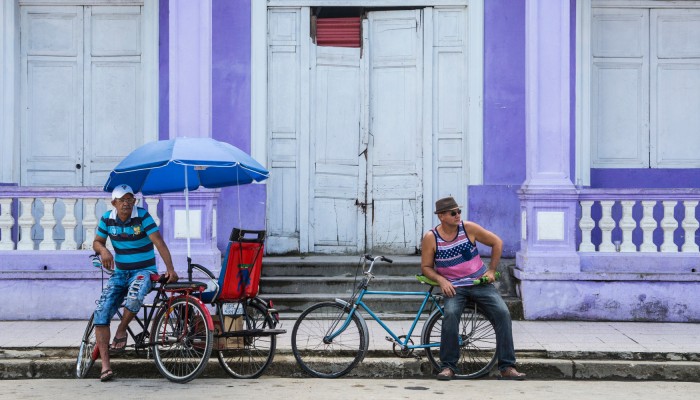
Internet & Phone Service in Cuba
Phones
For ringing abroad from Cuba, it will probably be cheaper to use your cell. But for local calls, it is more economical to use a payphone. Prepaid phone cards are available at most post offices, hotels, and travel agents and require you to enter a unique code that’s found on the card.
Internet
Internet access in Cuba is still limited and relatively expensive, although you will find cybercafes in the major cities. Some upmarket hotels will also have Wi-Fi for guests to use and usually have the fastest connections, although the prices for this luxury can be high. In most provincial towns, connections are incredibly slow. If you want to use the internet at a cybercafe, you may be required to show your passport.
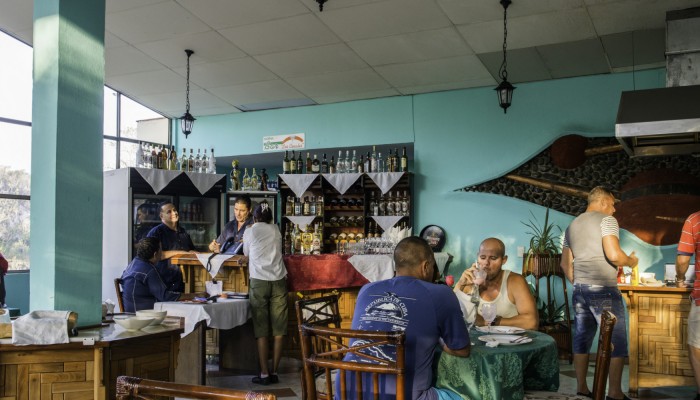
Power in Cuba
Cuba’s electricity is supplied at 110/220 volts and the country uses four different plugs - Types A, B, C and L. Type A plugs have two flat parallel pins while Type B is the same but with a grounding pin. Type C plugs have two round pins and Type L has three round pins.
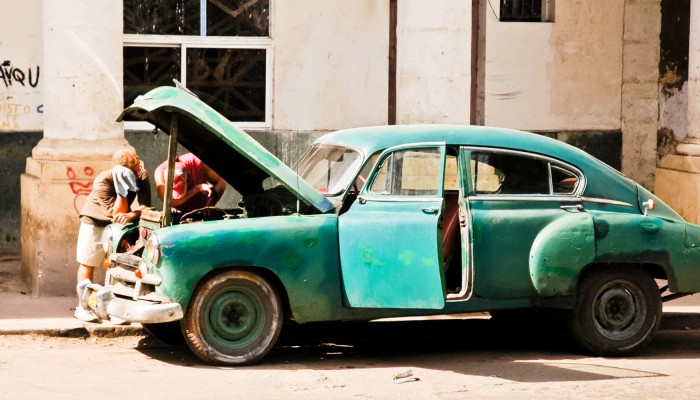
Getting to Cuba
José Martí International Airport in Havana is the gateway for most visitors to Cuba and receives flights from the UK, Europe, Canada and the United States. Flights from North America also serve some smaller regional airports, such as Varadero, Santa Clara, Holguin and Santiago de Cuba.
Virgin Atlantic has direct flights from the United Kingdom to Havana while TUI travels to Varadero. Air Europa, Air France, Iberia and KLM also fly from Heathrow via their respective European headquarters. Air Berlin flies from Germany to both Havana and Varadero while Aeroflot connects from Moscow to the Cuban capital. The national carrier, Cubana, also flies to Madrid, Paris, Moscow and Rome.
American Airlines now has regular flights from Miami to Havana while JetBlue connects to Fort Lauderdale and New York-JFK. United Express flies from Houston and Newark, with Southwest Airlines making the journey from Tampa to Havana.
For many years, Canada had the most scheduled flights of any country to Cuba and they remain well connected today. Air Canada flies to several cities across the island, as well as offering daily flights between Toronto and Havana. Cubana offers cheaper (but often less reliable) flights from Havana, Varadero, Cienfuegos, Santa Clara, Camagüey and Holguín to Toronto and Montreal.
For travelers coming from Australia and New Zealand, the most convenient option is to fly to Toronto and connect to Cuba with Air Canada as there are no direct flights from Oceania.
FAQ's
What immunizations are recommended or required?
Unless you are arriving from a country with endemic yellow fever or cholera, there are no compulsory immunizations for travel to Cuba. However, the Center for Disease Control and Prevention (CDC) advises that travelers are up-to-date on their routine vaccinations before visiting, including tetanus, hepatitis A, cholera, and typhoid. Everyone over 12 years of age should also be fully vaccinated against Covid-19 before travel.
Can I drink the water in Cuba?
Drinking tap water in Cuba is not advised due to the risk of parasites. If you are offered water that is not bottled, always check if it has been boiled first. Bottled water is readily available at restaurants, shops, and bars.
What type of Currency is used? Exchange Rate? Are US dollars accepted?
The dual currency that was once used in Cuba has been phased out and, as of January 2021, the Cuban peso (CUP) is the country’s sole official currency. The official exchange rate was pegged at 24 to $1 USD as of March, 2022. However, due to a growing informal or “black market” exchange that provided a much better rate, the Cuban government changed course August 4, 2022 and set the foreign currency exchange rate for USD at 120 CUP per dollar. Currently you can get this rate at banks and/or the Cadeca Exchange Bureaus. An 8% conversion fee for USD is applied, meaning that you’ll get about 110 CUP to the USD. Other currencies, such as the Euro or Mexican Peso, Canadian dollar, etc, have a 2% conversion fee. Again, this is the amount you will get at the bank or any official exchange bureau and rates are consistent at all banks and exchange bureaus in Cuba. Banknotes are available in $500, $200, $100, $50, $20, $10, $5, $3 and $1 while coins come in $5, $3, $1 and 20¢.
ATMs aren’t as readily available in Cuba as they are in many parts of the world but you will find them in most of the major tourist destinations. That being said, it is common for them to be out of service or out of cash.
As it’s not possible to buy CUP before arriving in Cuba, it’s best to bring currency in Euros, Canadian Dollars, or Pounds Sterling and exchange it at a bank or CaDeCa (Casa de Cambio) on arrival. In either case, you will probably need to show your passport. Credit cards are not widely accepted in Cuba and it’s best to carry cash to make payments, except at larger hotels where non-US Visa cards may be accepted.
What time zone is Cuba in?
Cuba is in the Eastern Time Zone (EST), which is the same as the East Coast of the United States. Daylight savings is observed from mid-March to early November.
What is the official language of Cuba?
Spanish is the official language in Cuba and is often referred to as Cubano. It is a variation of Castilian Spanish but incorporates Creole slang and a rhythmic intonation that differs from its Iberian counterpart. Cubano has also been influenced by African languages due to its history of slavery and some words are of native Indian origin. American English and French influences can also be seen in some words.
Do I need a visa or passport to travel to Cuba?
Citizens of most European countries, the United States, Canada, Australia, and New Zealand require a visa (known as a tourist card) to visit Cuba. To apply, you must have a valid passport for the duration of your stay, proof of a return flight, and confirmation of an accommodation booking in Cuba. It will enable you to stay in Cuba for up to 30 days.
Citizens of the United States also need to declare the reason for their trip according to the 12 categories of authorized travel to Cuba. “Support for the Cuban people” is the most popular choice, with other categories including “Family visits”, “Journalism”, and “Professional research”. You may be asked to declare your chosen category when booking a flight or accommodation, as well as on return to the United States.
Do I need travel insurance?
Travel insurance covering medical expenses is compulsory to visit Cuba and immigration authorities may check this on arrival. If you don’t have travel insurance, you will be required to sign up to the tourist-assistance agency, Asistur, before being granted entry.
What is the best way to get around once I'm there?
Internal flights are a quick and convenient way of getting around the island, particularly if you’re traveling between major cities. Aerocaribbean operates the most domestic routes, the majority of which take off or land in Havana. Aside from Santiago de Cuba, Santa Clara, and Camagüey, you can easily fly to the beach resorts of Varadero and Cayo Largo.
Getting around Cuba by public buses can be a slow (and sometimes complicated) process but will get you between all of the provincial capitals and tourist towns. Viazul and Astro both have extensive networks and operate buses that are equipped with air-conditioning and sometimes toilets. Securing tickets can be difficult due to limited supply and you should purchase your ticket from the station at least 24 hours before departure.
Local buses can be trickier to determine, with a lack of information and timetables at bus stops, not to mention overcrowding. Check for the final destination on the front of the bus or ask the driver before boarding. Cuba’s bus system is complemented by camiones, converted trucks that run short routes between towns. However, some drivers will not allow non-Cubans on board.
Cuba also has a rail network that links Havana with Santiago de Cuba via Santa Clara and Camagüey. The trains are slow but sociable and are a great way to experience Cuba’s countryside. Tickets can only be purchased in person at the departure station.
Taxis are one of the most convenient ways for tourists to get around Cuba, with both state-run and privately-owned taxis available. You can also find taxis colectivos (shared taxis) that operate within towns and cities along specific routes, as well as offering long-distance services that depart from local bus stations. Some classic American cars are also used as private taxis and when using these, it is best to negotiate a fixed price before departure.
In Havana, you’ll find plenty of bicitaxis (three-wheeled bicycles) that can seat two passengers, as well as cocotaxis (small scooters with yellow bowling ball-like capsules) that are aimed squarely at tourists. Cycling is a popular way to explore Cuba and you’ll find makeshift repair workshops all over the country.
Renting a car is relatively expensive in Cuba but the lack of traffic makes it an efficient way of getting around the island. All of the car rental agencies are state-run, with the two main players being Cubacar and Havanautos. To rent a car in Cuba, you must have held a driver’s license from your home country or an international driver’s license for at least a year and be 21 years of age or older. If you do decide to rent a car, keep in mind that road markings and street lights are limited while potholes are common. Avoid driving at night outside of the cities and keep in mind that gas stations are few and far between.
When are the best times to visit Cuba?
The best time to visit Cuba is between November and April, which coincides with the island’s dry season. Temperatures range between 77°F and 86°F, with conditions generally balmy. May to November is Cuba’s rainy season, with the heaviest downpours in June, July, September, and October. That being said, the showers tend to be short-lived, with spells of sunshine in between. The hottest and most humid month of the year is usually August.
The Caribbean is most susceptible to hurricanes between June and November but this can also be one of the best times to visit due to the carnivals that take place in Havana, Matanzas, and Santiago de Cuba in late July/early August. May/June and September/October are the quietest months in Cuba and you’ll find the best deals on accommodation, tours, and flights during these periods.
What kind of adapters will I need for my electronics?
Cuba’s electricity is supplied at 110/220 volts and the country uses four different plugs - Types A, B, C, and L. Type A plugs have two flat parallel pins while Type B is the same but with a grounding pin. Type C plugs have two round pins and Type L has three round pins.
How much should I tip in Cuba?
Tipping is expected in most of Cuba’s service industries where many people rely on tips to make a living. It’s customary to tip waiters, cleaners, and car park attendants as you would in the United States, as well as tour guides and bellboys. A service charge of between 10 and 15% is standard at restaurants.
If you are taking a metered taxi, this means that the driver works for the state and a tip on top of the fare is customary. Privately owned taxis set their own rates and a tip isn’t necessary.
Is travel to Cuba safe?
Travel to Cuba is relatively safe, with petty crime such as pickpocketing the biggest problem. Avoid carrying valuables where they might easily be snatched and never flash expensive jewelry or cameras. If you rent a vehicle, don’t leave valuables visible on the seats or in the trunk, and always park your car in a secure/guarded place if possible.
Travelers who are concerned about their safety should explore Cuba with a reputable tour company for peace of mind. Current travel warnings are issued by the U.S. Department of State and should be checked before booking flights.
Are there cultural sensitivities I should be aware of?
On arrival in Cuba, the Spanish forced the Indigenous people to convert to Catholicism and for many people, they associate the religion with oppressive colonial rule. That being said, around 60% of Cubans still identify as Catholics, although few regularly attend Mass.
Santeria combines elements of Catholicism with the Yoruba religion brought by slaves from Nigeria and Benin. It is thought that between 80 and 90% of Cubans consult with Santeria priests and believe equally in the power of Santeria and the Catholic Church, with no contradiction between the two religions.
Despite limited resources in the country, most Cubans take great pride in their appearance and are well educated, with education (along with healthcare) free in the country. You’ll find that most people are sociable and are interested in sharing experiences and opinions about daily life and the world beyond their borders.
What is the food like? Any special dishes or local delicacies I should try?
Spanish, African, and Indigenous Taino culinary traditions have all left their mark on Cuban cuisine, as have influences from other Caribbean islands. Rice and beans (both black and red beans) feature prominently and accompany most meat-based dishes.
Keep an eye out for ropa vieja (shredded beef stew) and lechon asado (roast pork), as well as picadillo a la Habanera (ground beef with tomatoes, potatoes, and olives). No visit to Cuba is complete without trying the American-influenced Cuban sandwich, which consists of roast pork, ham, cheese, dill pickles, and yellow mustard.
Seafood lovers can try enchilado de camarones (a spicy shrimp dish) or Cuban-style paella while vegetarian dishes include platano frito (fried bananas) and yuca con mojo (boiled or fried cassava with a spicy sauce).
Arroz con leche (rice pudding) and casquitos de guayaba are among the most popular desserts, with the latter consisting of cooked guava that’s served with a sugary syrup. More famous than Cuba’s dishes are its drinks, in particular rum-based cocktails. You can quench your thirst with mojitos, daiquiris, and Cuba libres, or opt for a batido de trigo milkshake for an energy boost. Pre-sweetened espresso is also a staple across the island if you’re in need of a caffeine fix.


